

Exploring Mars Together
NASA is reimagining the future of Mars exploration, driving new scientific discoveries, and preparing for humans on Mars.
Fascination with the Red Planet began with early astronomers in ancient Egypt. The Babylonians and the Greeks tracked the motion of the planet, while Galileo made the first telescope observations of Mars. Even today, when we look into the night sky and see the pale red dot above us, it inspires us to wonder about this nearby world.
NASA is reimagining the future of Mars exploration, driving new scientific discoveries, and preparing for humans on Mars. NASA’s Mars Exploration Program will focus the next two decades on its science-driven systemic approach on these strategic goals: exploring for potential life, understanding the geology and climate of Mars, and preparation for human exploration.
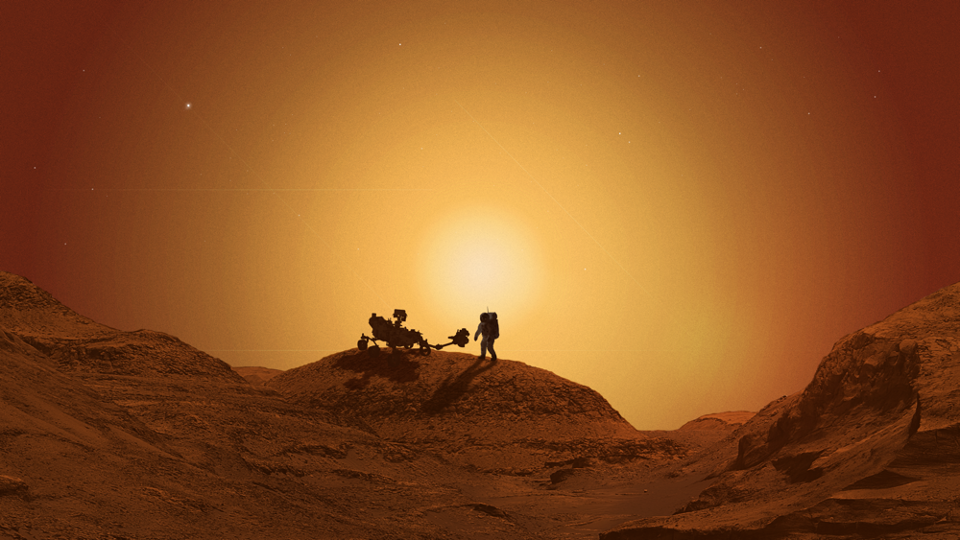
The Future of Mars Plan
NASA’s Mars Exploration Program is focusing on its future - delivering profound scientific investigation with a new strategic paradigm designed to send lower-cost, high-science-value missions and payloads to Mars at a higher frequency.
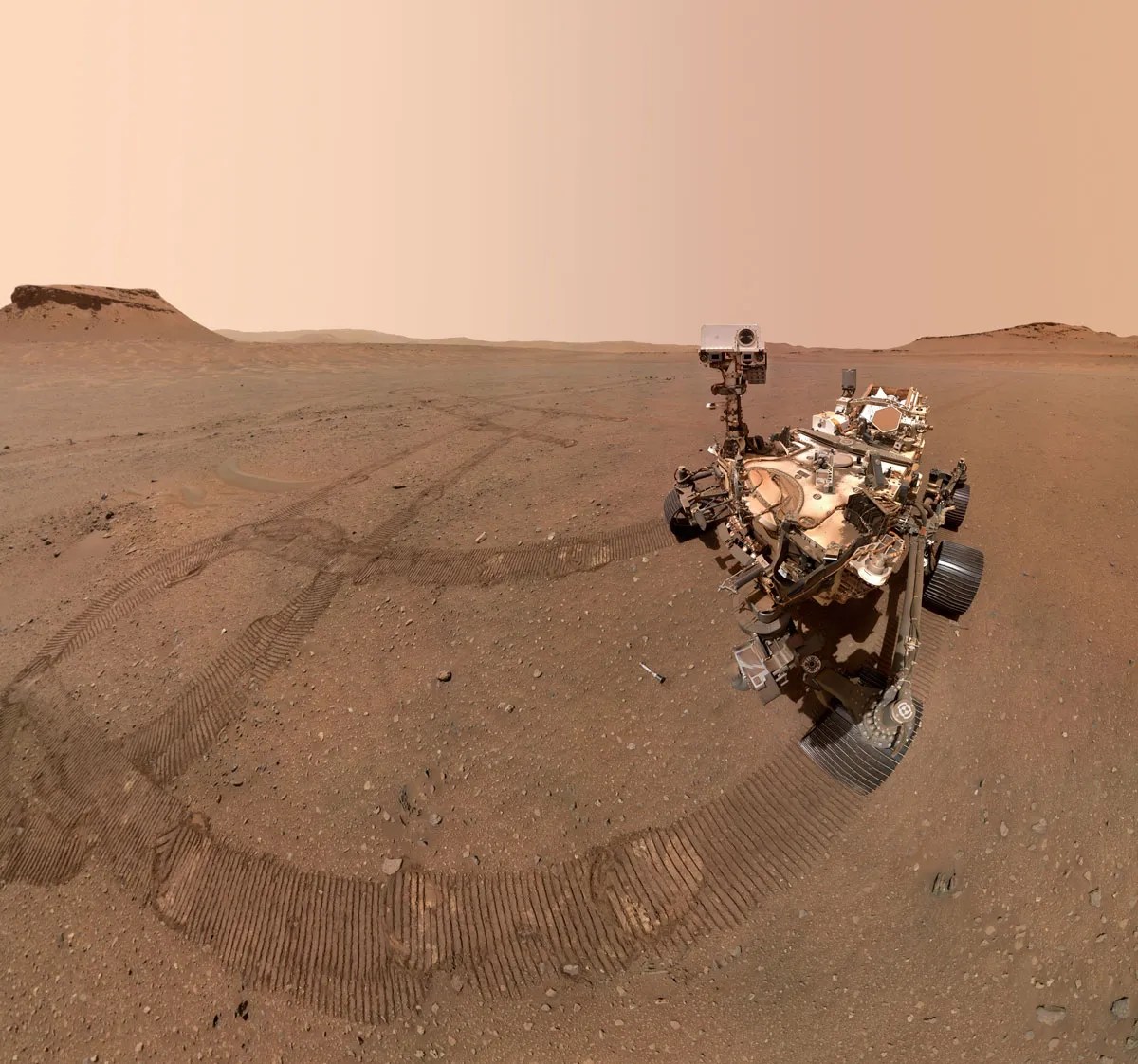
Industry Engagement
The Mars Exploration Program is conducting preliminary activities to engage industry in understanding both NASA and commercial capabilities and needs.
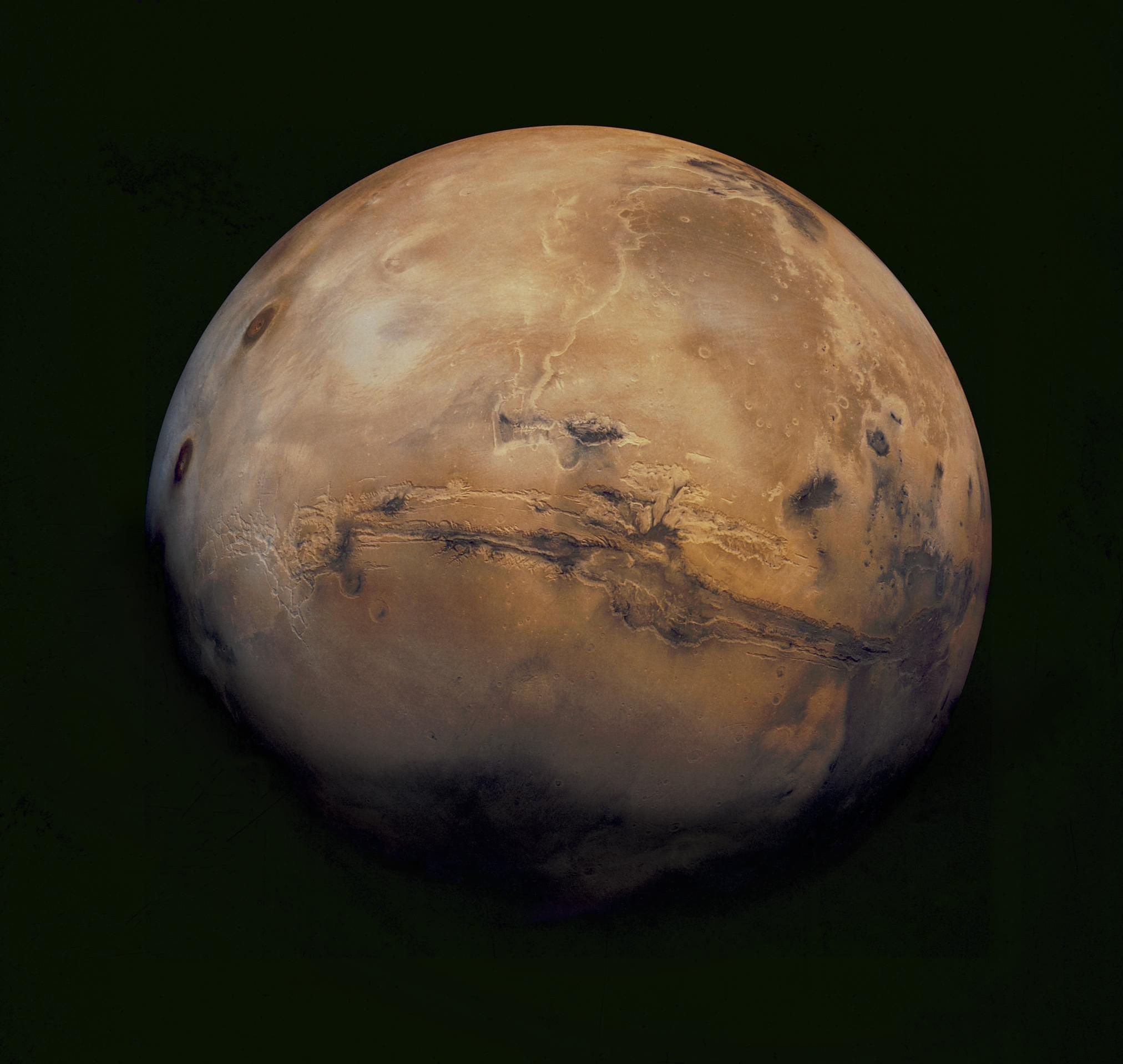
Mars Exploration Program
The Mars Exploration Program is a science-driven program that seeks to understand whether Mars was, is, or can be, a habitable world.

The Future of Mars Plan 2023-2043
How We Explore Mars
To discover the possibilities for life on Mars, NASA uses science-driven robotic missions enabling us to explore Mars in ways we never have before.
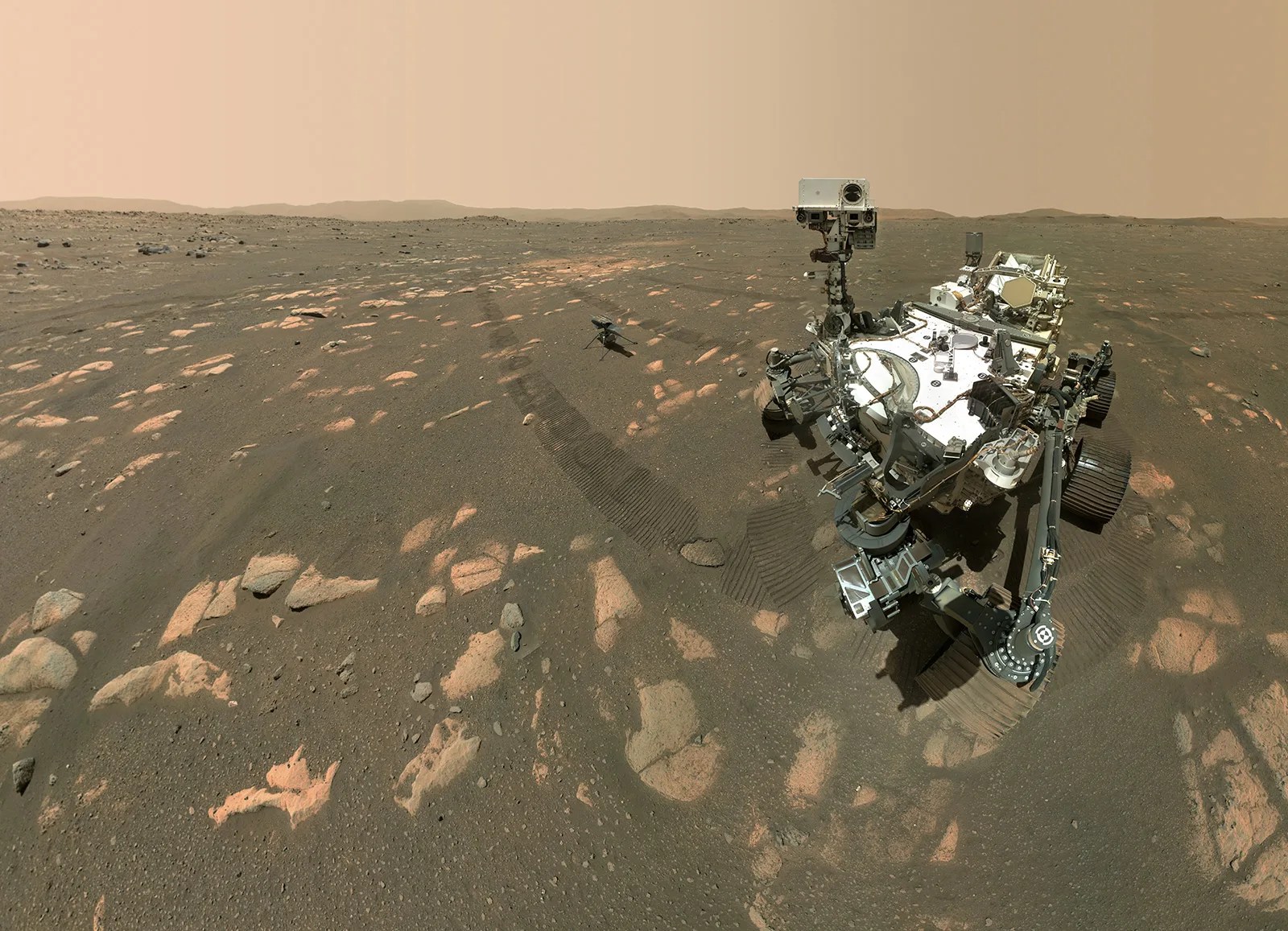
Mars 2020: Perseverance Rover
The Mars 2020 mission Perseverance rover is the first step of a roundtrip journey to return Mars samples to Earth. (2020-present)
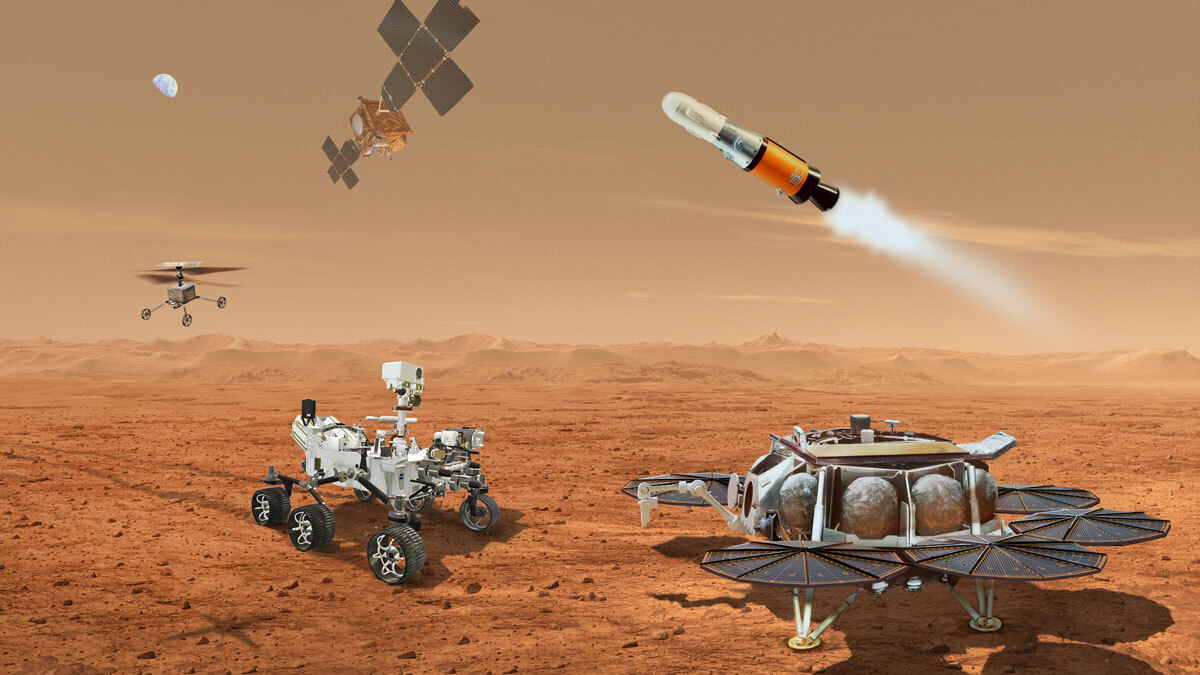
Mars Sample Return
NASA and ESA are planning ways to bring the first samples of Mars material back to Earth for detailed study. (Launching NET 2027)
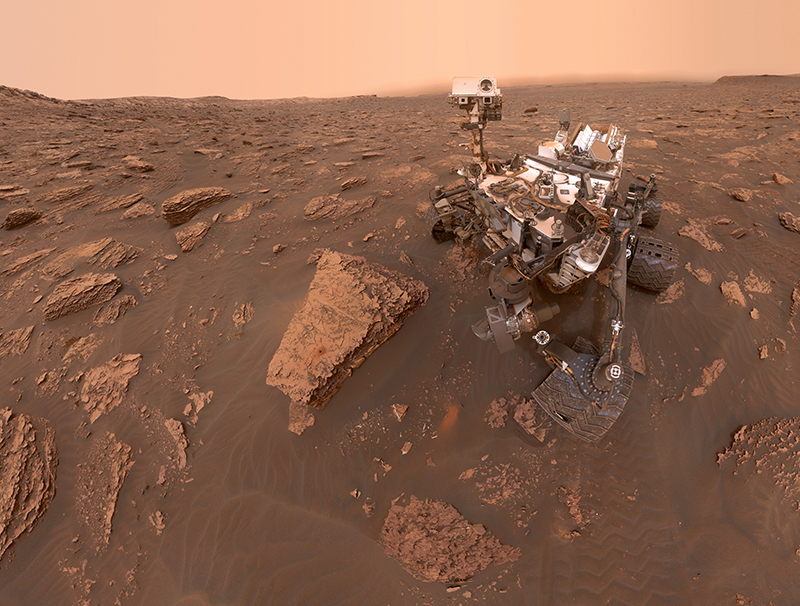
Curiosity Rover
Curiosity is investigating Mars to determine whether the Red Planet ever was habitable to microbial life. (2011-present)
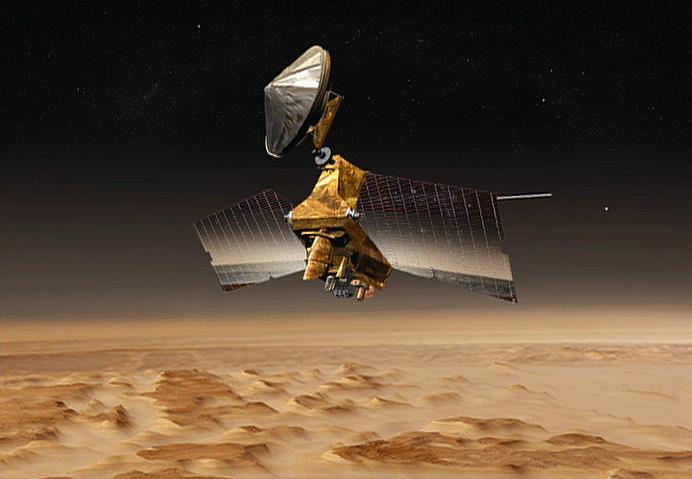
Mars Reconnaissance Orbiter
MRO explores the planet's atmosphere and terrain from orbit. It is also a crucial communications hub.
Mars News and Features
NASA Technology Grants to Advance Moon to Mars Space Exploration
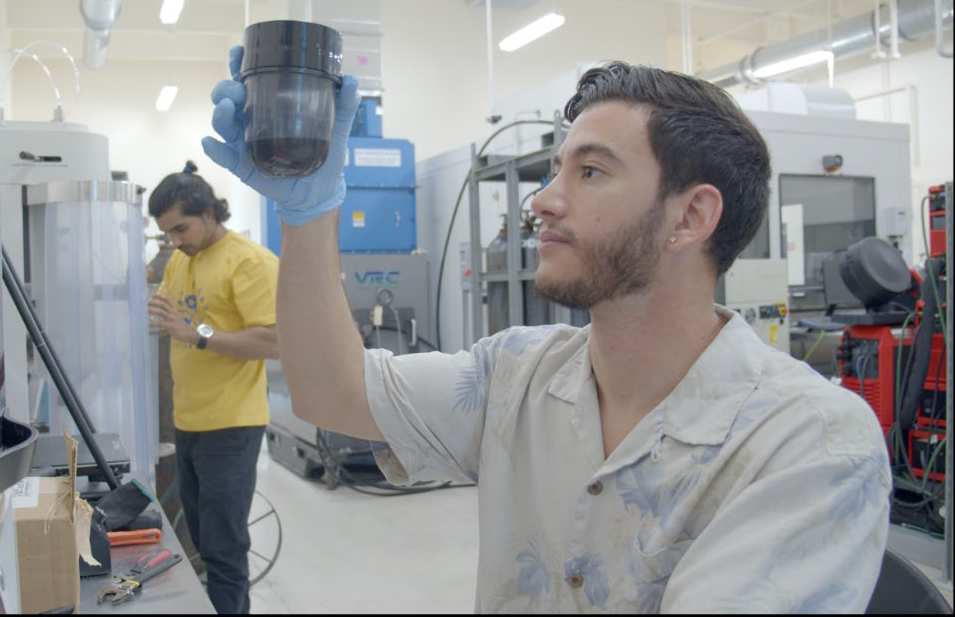
NASA Selects Commercial Service Studies to Enable Mars Robotic Science
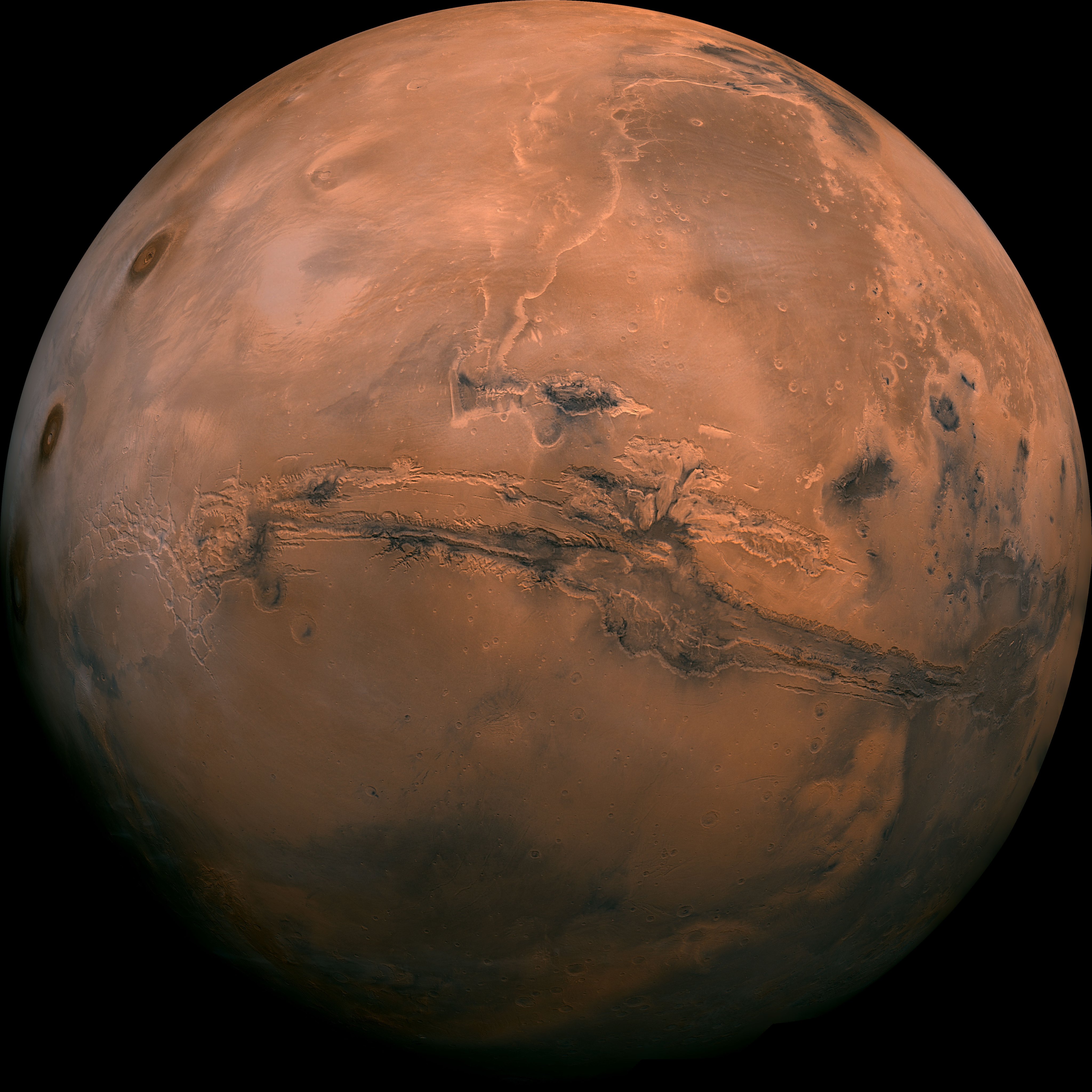
NASA Scientists Gear Up for Solar Storms at Mars

Major Martian Milestones

Why is Methane Seeping on Mars? NASA Scientists Have New Ideas
Discover More Topics From NASA

Mars: Facts
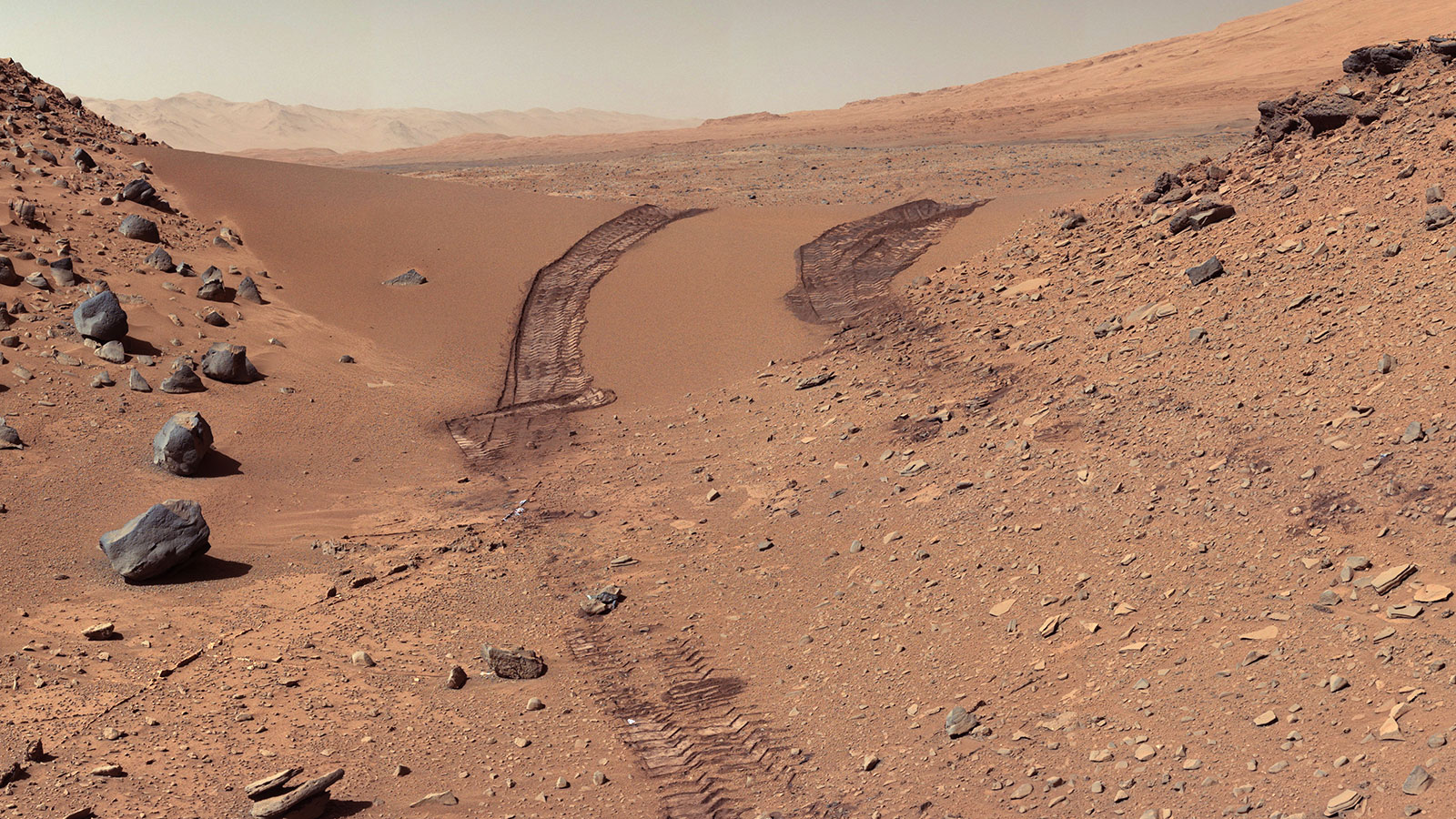
Mars Resources
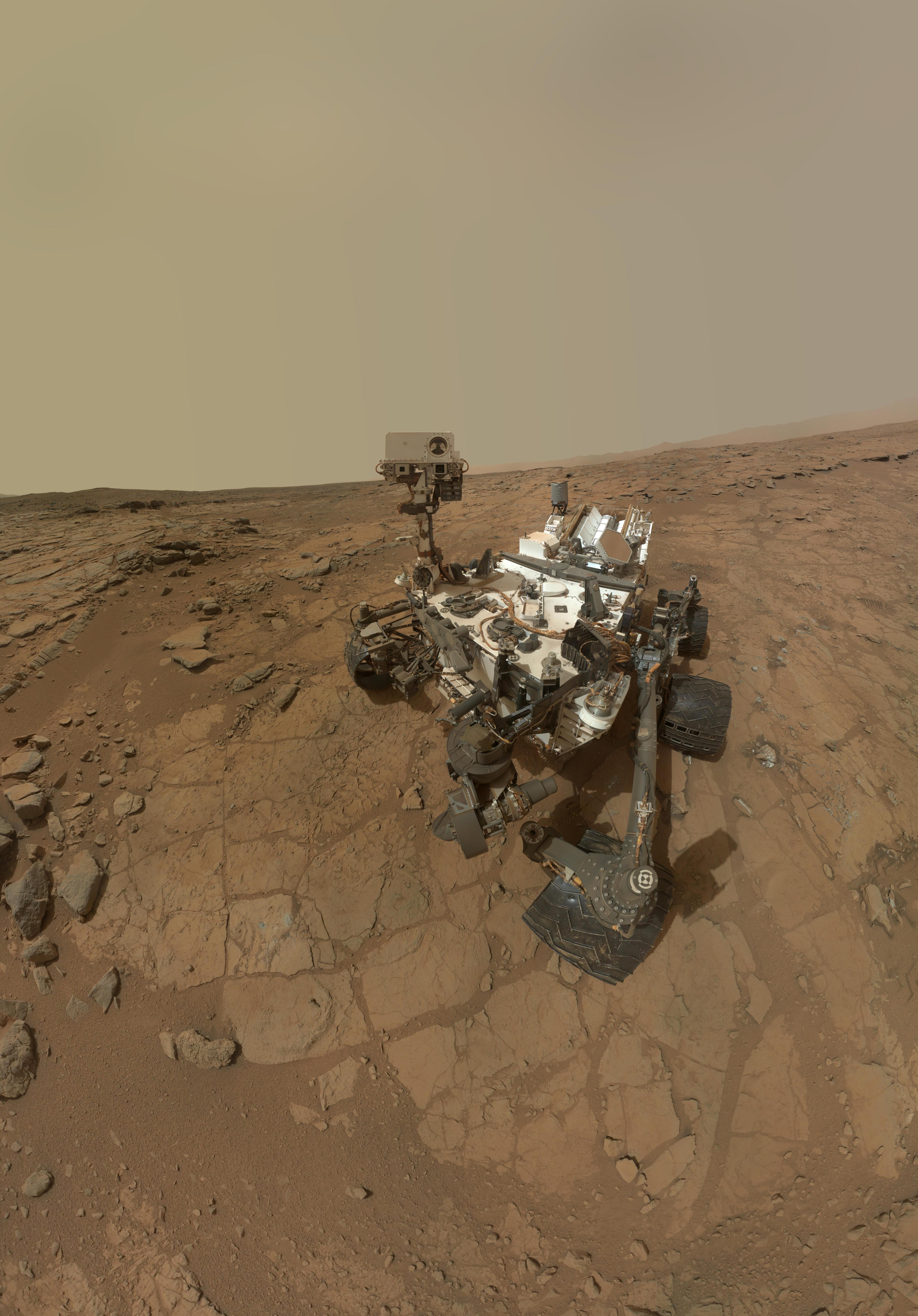
- Skip to main content
- Keyboard shortcuts for audio player
Consider This from NPR

- LISTEN & FOLLOW
- Apple Podcasts
- Google Podcasts
- Amazon Music
Your support helps make our show possible and unlocks access to our sponsor-free feed.
NASA Hopes To Land Humans On Mars By 2030. Is That A Good Thing?

April 30, 2021, file image taken by the Mars Perseverance rover. The Mars Ingenuity helicopter, right, flies over the surface of the planet. (NASA/JPL-Caltech/ASU/MSSS via AP, File) AP hide caption
April 30, 2021, file image taken by the Mars Perseverance rover. The Mars Ingenuity helicopter, right, flies over the surface of the planet. (NASA/JPL-Caltech/ASU/MSSS via AP, File)
For years, the idea of landing humans on Mars has seemed just out of reach.
But now, NASA is hoping it will happen by 2030.
While the technology may exist to reach Mars, will that same technology keep humans alive?
NPR's Scott Detrow talks to Kelly Weinersmith. With her husband Zach Weinersmith, she is co-author of the book A City on Mars: Can we settle space, should we settle space, and have we really thought this through?
Sign up for Consider This+ to hear every episode sponsor-free and support NPR. More information is at plus.npr.org/considerthis. This episode was produced by Marc Rivers. It was edited by Jeanette Woods. Our executive producer is Sami Yenigun. Email us at [email protected].
Watch CBS News
Manned mission to Mars by 2030s is really possible, experts say
January 14, 2014 / 11:40 AM EST / Space.com
Sending humans to Mars by the 2030s is affordable, a group of experts finds, but some key changes are needed if it is going to happen.
A workshop group of more than 60 individuals representing more than 30 government, industry, academic and other organizations has found that a NASA-led manned mission to Mars is feasible if the space agency's budget is restored to pre-sequestration levels. Putting the first humans on the Red Planet would also require international cooperation and private industry support.
There is a growing consensus among the space community that a manned mission to Mars should be a priority worth working toward in the coming years, according to Chris Carberry the executive director of Explore Mars Inc., the organization that hosted the workshop with the American Astronautical Society. [ 5 Manned Mission to Mars Ideas ]
"To be able to make it feasible and affordable, you need a sustainable budget," Carberry told SPACE.com. "You need a budget that is consistent, that you can predict from year to year and that doesn't get canceled in the next administration."
Budget issues
While Carberry said that it is possible to launch a manned mission to Mars by the 2030s under pre-sequestration budget levels, a NASA-led human mission to Mars will probably never launch under current budgetary constraints, Carberry said.
"We're not far off from what we need," Carberry said. "We just need to get back into a reasonable budget, which we're not in right now."
President Barack Obama requested about $17.7 billion for NASA during his 2013 budget proposal , $59 million less than what the space agency received in 2012.
"[NASA] funds are divided between various missions, directorates and centers," Carberry said via email. "Unless there was a MAJOR restructuring, it would be hard to accomplish a NASA-led Mars mission [under the current budget]. That said, major disruptive technology gains could always occur that could make it viable — we just can't count on that happening."
From now until the 2030s
The workshop group's plan hinges partially upon the availability of NASA's heavy-lifting rocket, the Space Launch System, and the space agency's deep space crew capsule, the Orion spacecraft. SLS and Orion are both in development now, with Orion's first unmanned test flight slated for later this year.
In December 2013, attendees affiliated with NASA, Boeing, Orbital Sciences Corp. and many others at the Affording Mars Workshop arrived at six agreements that could frame the way that space agencies work toward a manned mission to Mars. They are:
- The goal of sending humans to Mars is affordable with the right partnerships (international, commercial/industrial, intergovernmental, etc.), commitment to efficiency, constancy of purpose and policy/budget consistency.
- Human exploration of Mars is technologically feasible by the 2030s.
- Mars should be the priority for human spaceflight over the next two to three decades.
- Between now and 2030, investments and activities in the human exploration of space must be prioritized in a manner that advances the objective of initial human missions to Mars beginning in the 2030s.
- Utilizing the International Space Station, including international partnerships, is essential for human missions to deep space.
- Continuation of robotic precursor missions to Mars throughout the 2020s is essential for the success of human missions to Mars.
Carberry said that the experts are still not sure whether a long or short mission to the Red Planet would be best when launching the first manned mission to Mars.
Getting to Mars
As a model of international collaboration and a huge undertaking in space, the International Space Station (ISS) could provide vital lessons about getting humans to Mars, Carberry said. The space station mission, which has been newly extended through 2024 , is the best example of a consistent budget set forth for a huge project in space, he added.
"The only reason it [the International Space Station] has survived the years is because it's an international mission," Carberry said. "It is held together by international treaties and strong agreements … If we were to follow that model and maybe even move on with the partnership to the next step, that perhaps could be the greatest legacy of ISS because that's a proven model of sustainability, because you have more holding it together than just that annual cycle." [ 7 Biggest Mysteries of Mars ]
The $100 billion orbiting outpost could also be used to mimic parts of a mission to the Red Planet. Engineers could use the orbiting laboratory to demonstrate telerobotics and new spacesuits, and to work out possible problems that could arise on a trip to Mars.
Bridge mission
The workshop group also explored the idea of a mission that would bridge the space station and a manned mission to Mars. Agencies should consider such a bridge mission when moving forward toward a launch date in the 2030s, the workshop found.
The bridge mission could be anything from NASA's ambitious plan to capture an asteroid and bring it into lunar orbit where astronauts could explore it, to a small and temporary station where astronauts can learn a little more about fending for themselves while in space.
"When they're on ISS, they communicate [with Earth] every day — they can barely do anything without communicating with Mission Control," Carberry said. "They need to get out of the habit of that, and they know that."
Other missions
Private companies are planning their own trips to the Red Planet. Mars One is planning on sending a group of people to colonize the planet on a one-way mission in 2022. The company is also expected to send a lander to Mars in 2018.
The Inspiration Mars mission , now slated to launch in 2021, will launch a couple on a flyby of Mars. This private mission might be a good precursor mission before a full Martian landing, according to Carberry.
"There's an interesting window in 2021 where they would flip by Venus, which is relatively interesting itself," Carberry said. "If you have a crewed mission flying by Venus on the way to Mars, that's pretty impressive."
If the Inspiration Mars mission does launch in 2021, it may help scientists put human boots on Martian dirt by the 2030s, Carberry said.
Follow Miriam Kramer @mirikramer and Google+ . Follow us @Spacedotcom , Facebook and Google+ . Original article on SPACE.com .
More from CBS News
NASA Unveils Three-Part Plan to Reach Mars by 2030s
NASA wants to put people on Mars by the 2030s. Last week, they detailed how that might become a reality.
In a report titled " NASA’s Journey to Mars: Pioneering Next Steps in Space Exploration ," the agency laid out a three-part plan on how it might reach the Red Planet.
"We are on a journey to Mars," read the report. "In the next few decades, NASA will take steps toward establishing a sustainable human presence beyond Earth, not just to visit but to stay."
The first phase involves more research on the International Space Station — especially when it comes to studying the effects of living in space for long periods of time — and further development of its most powerful rocket yet, called the Space Launch System (SLS).
Next, NASA wants to perform a variety of tasks in cislunar space, a fancy name for the area around the moon.
That includes the Asteroid Redirect Mission, which involves sending a solar-electric robotic probe to an asteroid, removing a boulder-sized chunk, and taking that back to cislunar orbit. NASA hopes to bring astronauts out to study the asteroid sample by 2025.
Related: Why NASA and Matt Damon Love 'The Martian'
The final part of the plan involves sending astronauts to orbit the Red Planet and possibly landing on one of its moons. Then comes the hardest part: landing human beings on Mars with the equipment to get off the planet's surface and return safely back to Earth.
Keith Wagstaff is a contributing writer at NBC News. He covers technology, reporting on Internet security, mobile technology and more. He joined NBC News from The Week, where he was a staff writer covering politics. Prior to his work at The Week, he was a technology writer at TIME.
He lives in Brooklyn, N.Y.
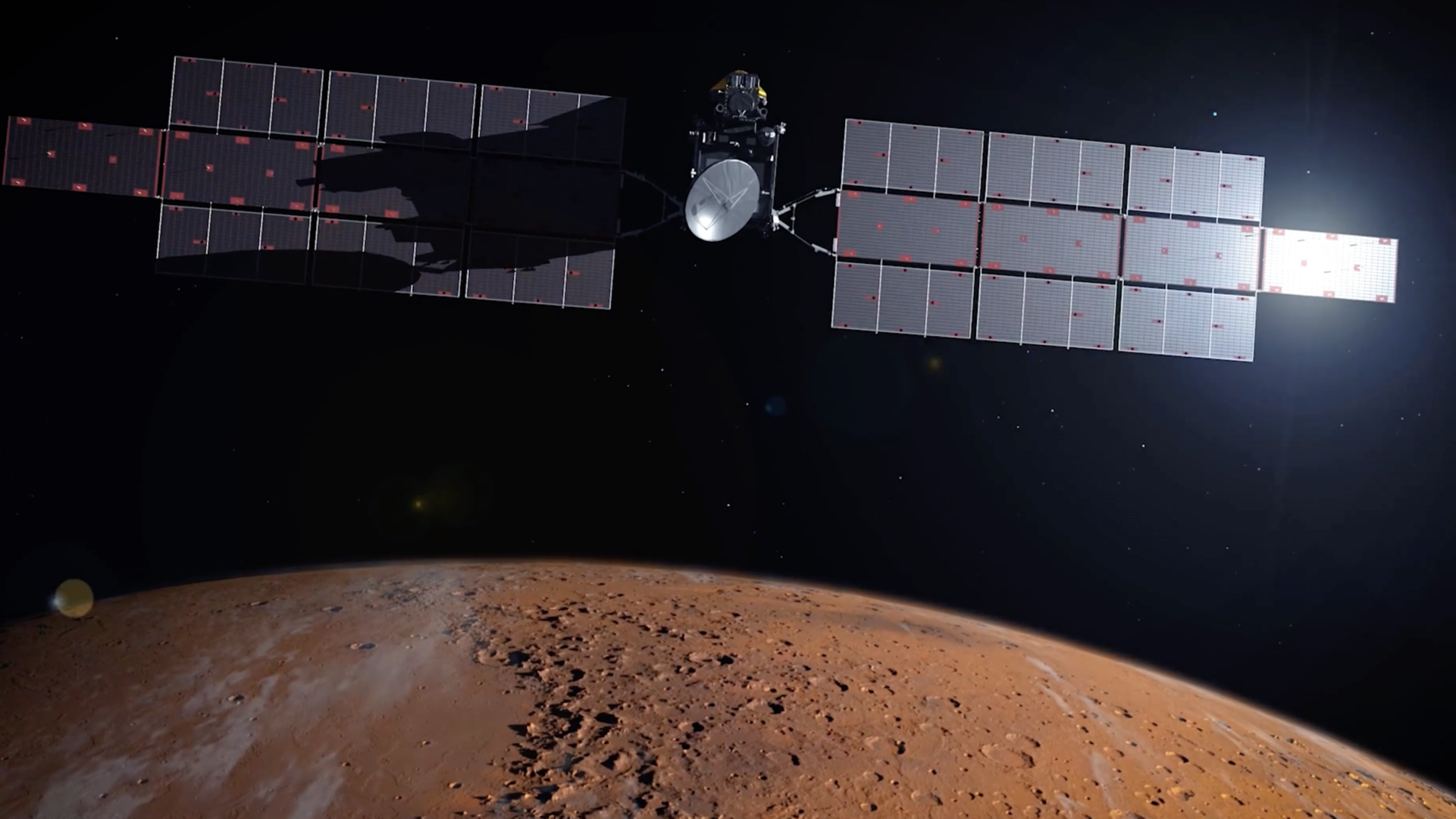
Earth Return Orbiter – the first round-trip to Mars
The Earth Return Orbiter (ERO) is a mission of firsts. The European orbiter would be:
- The first interplanetary spacecraft to make a full round-trip from Earth to Mars.
- The first spacecraft to rendezvous and capture an object in orbit around another planet.
- The biggest spacecraft to orbit the Red Planet.
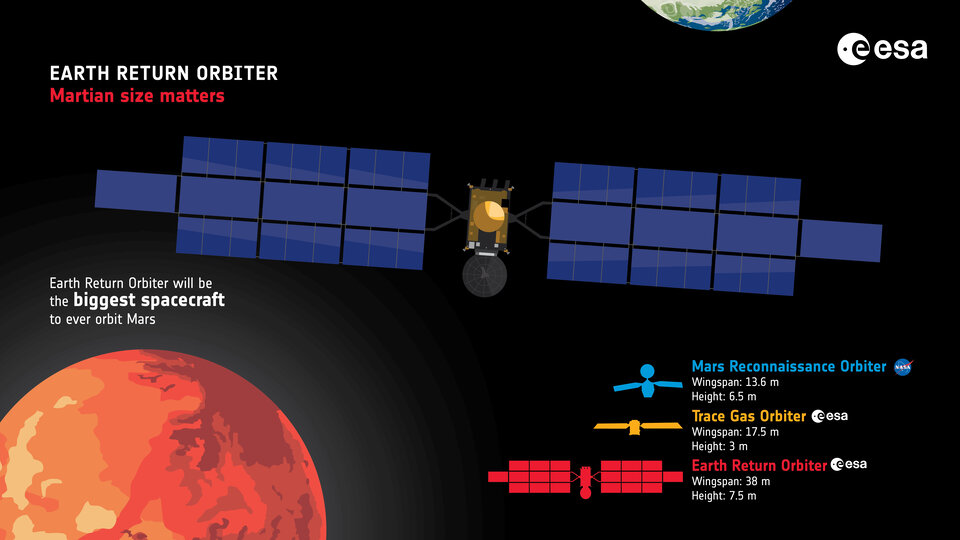
ESA’s Earth Return Orbiter is one of three missions launched from Earth that would be part of the intricate Mars Sample Return campaign to bring martian rock, soil and atmospheric samples back to Earth.
In addition to the rendezvous and return mission, ERO would provide critical Mars-Earth communications coverage for the NASA’s Perseverance rover and the Sample Retrieval Lander to deliver the martian samples.
Just as the Apollo Moon samples have fuelled research for decades, the scientific community would have pristine samples from Mars to study for years to come.
ERO’s round-trip to the Red Planet, as well as its rendezvous with an object launched from the martian surface, would pave the way for crewed missions to Mars.

Mission overview at a glance
The ERO mission has several mission phases foreseen with many technical firsts executed in synchrony with other elements of the Mars Sample Return campaign.
- The European spacecraft would fly to Mars using the most powerful electric propulsion for an interplanetary mission.
- The Earth Return Orbiter would capture a basketball-sized capsule launched from the surface of Mars filled with a set of samples previously collected by Perseverance.
- European teams would orchestrate the catch in Mars orbit from 50 million km away with the help of ESA and NASA navigation teams.
- The capsule would safely be sealed into NASA’s Earth Entry System to ensure that the precious samples reach Earth’s surface intact for maximum scientific return .
- Three years after reaching Mars, ERO would spend two years changing its orbit to make its way back to Earth.
- Three days away from Earth, ERO would release the reentry system and place it on a precision trajectory for landing at a precise location on our planet.
- ERO performs a series of maneouvres to enter orbit around the Sun, never to return to Earth.
- The martian samples would be transported to a specialised curation facility, to be analysed by top scientists and laboratories from around the world.
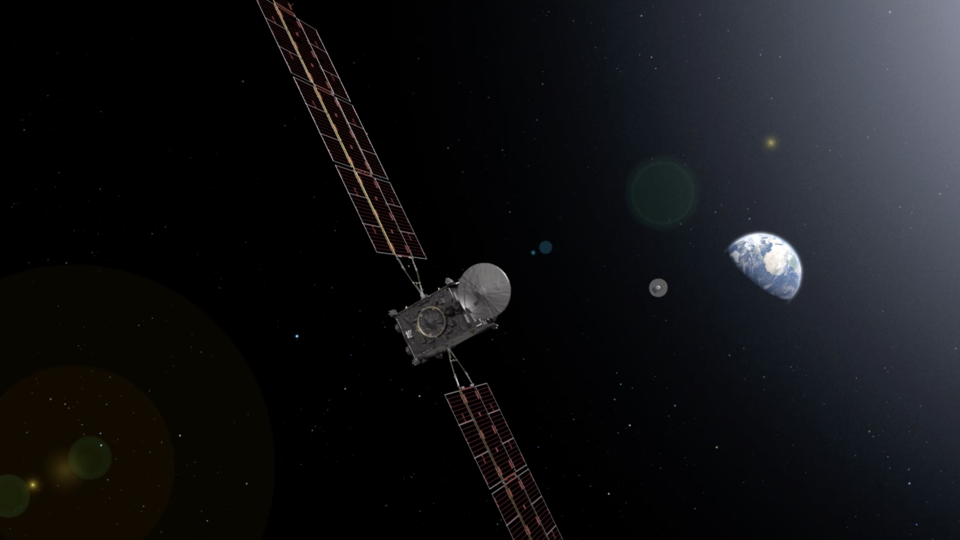
5 things to know
- First round-trip mission to another planet. It would take ERO about two years to reach its operational orbit around Mars, a year to perform its Mars mission and another two years to leave Mars and return to Earth.
- First spacecraft to capture a man-made object launched from another planet. ERO would demonstrate the first in-orbit rendezvous at Mars.
- Biggest spacecraft to ever orbit Mars. The seven-tonne, seven-metre tall spacecraft would be equipped with 144 m² of solar arrays spanning nearly 40 metres – the largest ever built for interplanetary flight.
- Powerful, hybrid propulsion. The electric propulsion system would be the most powerful flown for an interplanetary mission. While ERO would use chemical propulsion to enter Mars orbit, it would rely on solar electric propulsion for the cruise to and from Mars, and for placing itself in operational orbit.
- R adiation monitor. ERO would measure the total radiation dose it receives throughout its flight. Results will help monitor the health of the spacecraft and provide information on how to protect human explorers in future trips to Mars.
Quick facts
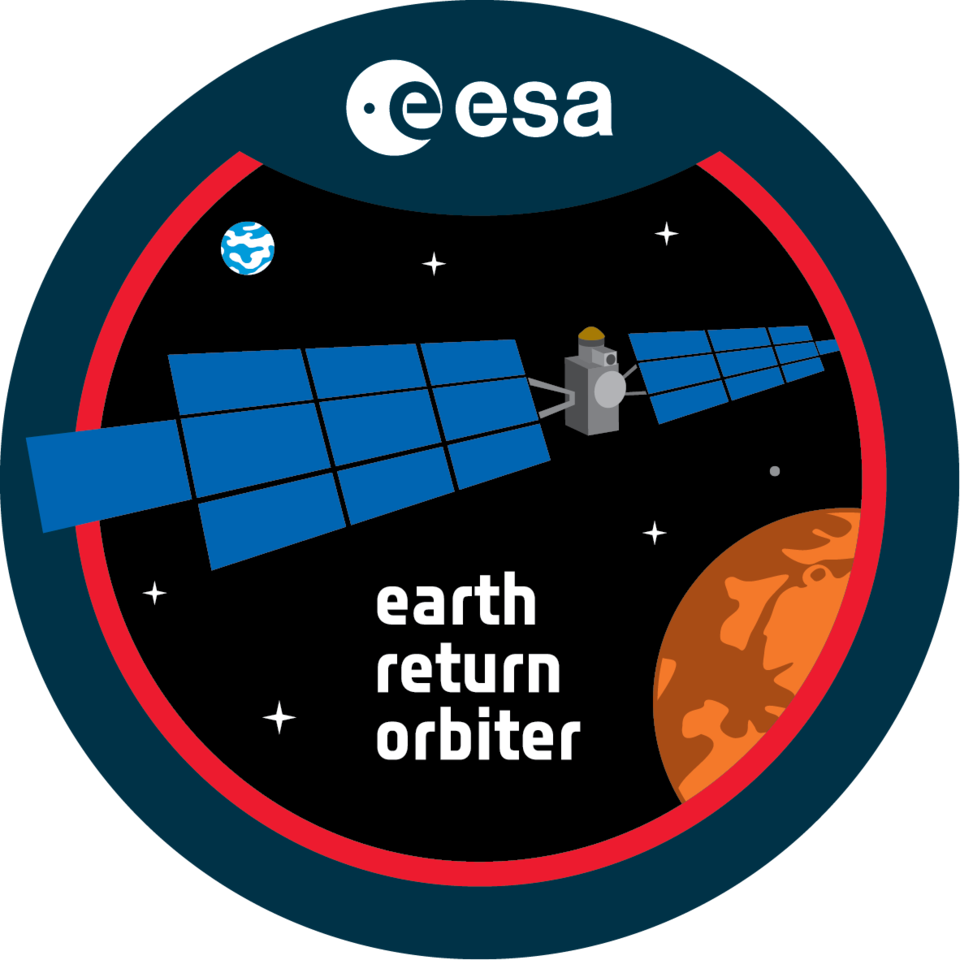
- Main job: Find and capture a sample capsule in Mars orbit and return it to Earth
- Launch date: No earlier than 2027
- Launch vehicle: Ariane 64
- Launch site: Kourou, French Guiana
- Arrival to Mars: 2029
- Arrival to Mars operational orbit: 2030, 325 km above Mars surface
- Wingspan: 38 m
- Height: 7.5 m
- Solar array surface area: 144 m²
- Mass: 7 tonnes
- Propulsion system: hybrid – electric and chemical propulsion

About Mars Sample Return
Returning samples to Earth from Mars is expected to be the most complex robotic space flight campaign ever attempted. The NASA-ESA Mars Sample Return Campaign promises to revolutionise humanity’s understanding of Mars by bringing scientifically selected samples to Earth for study using the most sophisticated instruments around the world. The campaign would fulfill a solar system exploration goal, a high priority since the 1970s and in the last three National Academy of Sciences Planetary Decadal Surveys.
This strategic NASA and ESA partnership would be the first mission to return scientifically selected samples from another planet and the first launch from the surface of another planet. The samples collected by NASA’s Perseverance Mars rover during its exploration of an ancient lakebed are thought to present the best opportunity to reveal clues about the early evolution of Mars, including the potential for past life. By better understanding the history of Mars, we would improve our understanding of all rocky planets in the solar system, including Earth.
Thank you for liking
You have already liked this page, you can only like it once!
Related Links

Europe to Mars – and back!
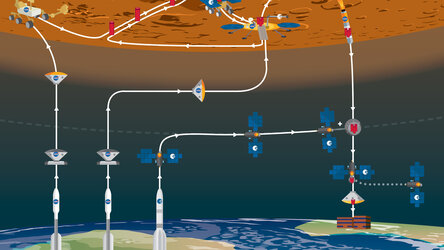
Mars on Earth – what next?
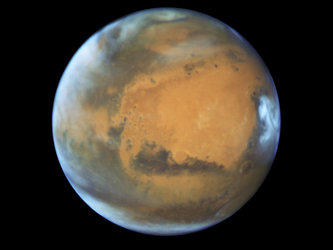
ESA and NASA to investigate bringing martian soil to Earth
Manned Mission to Mars By 2030s Is Really Possible, Experts Say

Sending humans to Mars by the 2030s is affordable, a group of experts finds, but some key changes are needed if it is going to happen.
A workshop group of more than 60 individuals representing more than 30 government, industry, academic and other organizations has found that a NASA-led manned mission to Mars is feasible if the space agency's budget is restored to pre-sequestration levels. Putting the first humans on the Red Planet would also require international cooperation and private industry support.
There is a growing consensus among the space community that a manned mission to Mars should be a priority worth working toward in the coming years, according to Chris Carberry the executive director of Explore Mars Inc., the organization that hosted the workshop with the American Astronautical Society. [ 5 Manned Mission to Mars Ideas ]
"To be able to make it feasible and affordable, you need a sustainable budget," Carberry told SPACE.com. "You need a budget that is consistent, that you can predict from year to year and that doesn't get canceled in the next administration."
Budget issues
While Carberry said that it is possible to launch a manned mission to Mars by the 2030s under pre-sequestration budget levels, a NASA-led human mission to Mars will probably never launch under current budgetary constraints, Carberry said.
"We're not far off from what we need," Carberry said. "We just need to get back into a reasonable budget, which we're not in right now."
Get the Space.com Newsletter
Breaking space news, the latest updates on rocket launches, skywatching events and more!
President Barack Obama requested about $17.7 billion for NASA during his 2013 budget proposal , $59 million less than what the space agency received in 2012.
"[NASA] funds are divided between various missions, directorates and centers," Carberry said via email. "Unless there was a MAJOR restructuring, it would be hard to accomplish a NASA-led Mars mission [under the current budget]. That said, major disruptive technology gains could always occur that could make it viable — we just can't count on that happening."
From now until the 2030s
The workshop group's plan hinges partially upon the availability of NASA's heavy-lifting rocket, the Space Launch System, and the space agency's deep space crew capsule, the Orion spacecraft. SLS and Orion are both in development now, with Orion's first unmanned test flight slated for later this year.
In December 2013, attendees affiliated with NASA, Boeing, Orbital Sciences Corp. and many others at the Affording Mars Workshop arrived at six agreements that could frame the way that space agencies work toward a manned mission to Mars. They are:
- The goal of sending humans to Mars is affordable with the right partnerships (international, commercial/industrial, intergovernmental, etc.), commitment to efficiency, constancy of purpose and policy/budget consistency.
- Human exploration of Mars is technologically feasible by the 2030s.
- Mars should be the priority for human spaceflight over the next two to three decades.
- Between now and 2030, investments and activities in the human exploration of space must be prioritized in a manner that advances the objective of initial human missions to Mars beginning in the 2030s.
- Utilizing the International Space Station, including international partnerships, is essential for human missions to deep space.
- Continuation of robotic precursor missions to Mars throughout the 2020s is essential for the success of human missions to Mars.
Carberry said that the experts are still not sure whether a long or short mission to the Red Planet would be best when launching the first manned mission to Mars.
Getting to Mars
As a model of international collaboration and a huge undertaking in space, the International Space Station (ISS) could provide vital lessons about getting humans to Mars, Carberry said. The space station mission, which has been newly extended through 2024 , is the best example of a consistent budget set forth for a huge project in space, he added.

"The only reason it [the International Space Station] has survived the years is because it's an international mission," Carberry said. "It is held together by international treaties and strong agreements … If we were to follow that model and maybe even move on with the partnership to the next step, that perhaps could be the greatest legacy of ISS because that's a proven model of sustainability, because you have more holding it together than just that annual cycle." [ 7 Biggest Mysteries of Mars ]
The $100 billion orbiting outpost could also be used to mimic parts of a mission to the Red Planet. Engineers could use the orbiting laboratory to demonstrate telerobotics and new spacesuits, and to work out possible problems that could arise on a trip to Mars.
Bridge mission
The workshop group also explored the idea of a mission that would bridge the space station and a manned mission to Mars. Agencies should consider such a bridge mission when moving forward toward a launch date in the 2030s, the workshop found.
The bridge mission could be anything from NASA's ambitious plan to capture an asteroid and bring it into lunar orbit where astronauts could explore it, to a small and temporary station where astronauts can learn a little more about fending for themselves while in space.

"When they're on ISS, they communicate [with Earth] every day — they can barely do anything without communicating with Mission Control," Carberry said. "They need to get out of the habit of that, and they know that."
Other missions
Private companies are planning their own trips to the Red Planet. Mars One is planning on sending a group of people to colonize the planet on a one-way mission in 2022. The company is also expected to send a lander to Mars in 2018.
The Inspiration Mars mission , now slated to launch in 2021, will launch a couple on a flyby of Mars. This private mission might be a good precursor mission before a full Martian landing, according to Carberry.
"There's an interesting window in 2021 where they would flip by Venus, which is relatively interesting itself," Carberry said. "If you have a crewed mission flying by Venus on the way to Mars, that's pretty impressive."
If the Inspiration Mars mission does launch in 2021, it may help scientists put human boots on Martian dirt by the 2030s, Carberry said.
Follow Miriam Kramer @mirikramer and Google+ . Follow us @Spacedotcom , Facebook and Google+ . Original article on SPACE.com .
Join our Space Forums to keep talking space on the latest missions, night sky and more! And if you have a news tip, correction or comment, let us know at: [email protected].

Miriam Kramer joined Space.com as a Staff Writer in December 2012. Since then, she has floated in weightlessness on a zero-gravity flight, felt the pull of 4-Gs in a trainer aircraft and watched rockets soar into space from Florida and Virginia. She also served as Space.com's lead space entertainment reporter, and enjoys all aspects of space news, astronomy and commercial spaceflight. Miriam has also presented space stories during live interviews with Fox News and other TV and radio outlets. She originally hails from Knoxville, Tennessee where she and her family would take trips to dark spots on the outskirts of town to watch meteor showers every year. She loves to travel and one day hopes to see the northern lights in person. Miriam is currently a space reporter with Axios, writing the Axios Space newsletter. You can follow Miriam on Twitter.
China launches Chang'e 6 sample-return mission to moon's far side (video)
SpaceX launches 23 Starlink satellites in 2nd half of spaceflight doubleheader (video)
Virgin Galactic to launch 7th commercial spaceflight on June 8
Most Popular
- 2 Does a cosmic 'glitch' in gravity challenge Albert Einstein's greatest theory?
- 3 Boeing Starliner spacecraft 'go' for 1st astronaut launch on May 6, NASA says
- 4 Long ago, a lake on Mars might have been sprawling with microbes
- 5 The 2024 Humans to Mars Summit is happening next week

Sending Humans to Mars: 8 Steps to Red Planet Colonization

After the red dust settles from President Barack Obama's reiteration of his ambitious goal to have humans reach Mars in the next two to three decades, the next question becomes: What will it take to get there?
"We have set a clear goal vital to the next chapter of America's story in space: sending humans to Mars by the 2030s and returning them safely to Earth, with the ultimate ambition to one day remain there for an extended time," Obama wrote in an op-ed on CNN.com yesterday (Oct. 11).
NASA has laid out detailed plans for the journey to Mars . It's feasible to get there by the 2030s — if that deadline is stretched out to the last year of the decade, said John Logsdon, a professor emeritus of political science and international affairs at the Space Policy Institute at The George Washington University in Washington, D.C. [ 5 Mars Myths and Misconceptions ]
Other experts say Obama's stated timeline is not bold enough.
"We are far closer today to sending humans to Mars than we were to sending men to the moon in 1961, and we were there eight years later," said Robert Zubrin, president of nonprofit organization The Mars Society and the author of "The Case for Mars: The Plan to Settle the Red Planet," (Free Press, 2011). The next president should announce an ambitious goal to get to Mars by the end of the second term, or by 2024, Zubrin said. Otherwise, the momentum for the mission could be lost, and space exploration could be delayed further, he added. [ SpaceX to Mars: Awe-Inspiring Video Shows Vision for Red Planet Exploration ]
Either way, before astronauts start packing their spacesuits and intergalactic playlists, scientists have to sort out a few problems.
Step 1: Build American technology to get astronauts to space
Currently, the United States relies on a Russian Soyuz spacecraft to get astronauts to the International Space Station. That is set to change, as private spaceflight companies have taken on the challenge of building a system to launch humans and cargo spaceward: Elon Musk 's SpaceX is working on the Dragon robotic launch vehicles, while Boeing is building its CST-100, Logsdon said. Musk has also said that SpaceX's robotic launch vehicle could head off to Mars as soon as 2018 . (A launch vehicle is a rocket-powered vehicle designed to send spacecraft or satellites into space.)
Sign up for the Live Science daily newsletter now
Get the world’s most fascinating discoveries delivered straight to your inbox.
Step 2: Build bigger spacecraft
A Mars voyage requires a spacecraft that can carry multiple people, along with all the supplies for a three-year round-trip, including potential cargo items, said Bret Drake, an engineering specialist with Los Angeles-based Aerospace Corp., a nonprofit organization that researches launch vehicles, satellite systems, ground control systems and space technology for the federal government.
"To sustain a crew all the way to Mars means being able to launch rather heavy payloads, because you have to have the fuel and supplies for the round-trip," added Logsdon. "And there's no 7-Eleven on Mars where you can stock up to come home," he told Live Science.
One alternative is to create a giant spacecraft; another is to develop multiple smaller modules that can be launched separately into orbit and then assembled in space, Logsdon said. (Some of these modules could hold people while others could hold supplies, for instance).
Either way, the basic technology is there, Zubrin said. "It has to be larger than any we've built before," he said. Even so, "there isn't new science here."
Currently, Lockheed Martin is developing a four-person spacecraft called the Orion , which will sit atop the heavy-lift launch system, called the Space Launch System (SLS), that NASA is developing to take people into deep space. Orion already completed one successful test flight on Dec. 5, 2014, and is set to take a trip around the moon in 2018.
Step 3: Build bigger rockets
Launching a bigger spacecraft into deep space requires bigger rockets on any launch vehicles used. NASA plans to conduct a second test of what will be the world's largest rocket, which will be part of the SLS, sometime in 2021, according to NASA . SpaceX is also developing the Falcon Heavy rocket, which is designed to launch heavier payloads, including people, into space.
Step 4: Stick the landing
After people enter Mars' orbit, they need to land on the Red Planet. With past missions, friction, thermal effects and parachutes could provide the deceleration needed to land. But a parachute won't have enough stopping power for such heavy crafts.
However, scientists are making progress on that front.
For instance, SpaceX has shown that high-speed crafts can decelerate using supersonic retropropulsion, which involves firing engines while landing, Drake said. "We now have a feasible technical solution for how to get large vehicles to the surface of Mars," Drake said.
Step 5: Figure out long-term habitation on a space station
Astronauts have logged many weeks and months on the International Space Station (ISS), demonstrating the feasibility of long-term habitation systems, such as those that provide safe water, process waste, and filter air in space. Similar systems could be used for a stay on Mars, experts say.
The difference, however, is that the ISS is in low Earth orbit, just a few hours' trip to the home planet. If anything breaks, Earth can still come to the rescue. That won't be possible on Mars, which is at least a six- to nine-month journey, even when the planets are at their closest point to each other.
"One key advancement for the life-support system is increasing the reliability of the systems," Drake said. "For Mars missions, there are no quick-abort modes back to Earth, nor ground-up resupply if systems fail. So the life-support systems need to be reliable, and maintainable by the crew, for long periods of time — many years," Drake said.
Step 5: Avoid deadly cosmic radiation
Astronauts going on a Mars mission will need protection from two forms of radiation: solar proton events (or solar flares) and galactic cosmic radiation .
The first "can be mitigated by proper vehicle design, along with a dedicated storm shelter, such as a water wall made from the life-support system water supply," Drake said. (This would involve literally lining the walls with the water used for drinking and showering.)
Shielding people from galactic cosmic radiation is trickier. In free space, cosmic radiation levels are extremely high. However, the Mars Science Laboratory, which landed on the Martian surface aboard the rover Curiosity, has measured cosmic radiation levels and showed that radiation exposure at the surface of the red planet is similar to levels seen aboard the ISS, Drake said. Because the ISS is located in low Earth orbit, it is below the two doughnut-shaped radiation belts called Earth's Van Allen belts , which block from Earth many of the charged particles spewed from the sun, as well as from cosmic rays, Logsdon said.
One strategy may be to make the trip through free space very quickly, minimizing the exposure to the area with the highest radiation, Drake said.
"It's safer to be on the surface of Mars than free space," Drake said.
Step 7: Get to the moon
Before making the three-year round-trip to Mars, many of these long-term space systems will be tested in cislunar orbit, according to NASA's timeline of the journey to Mars . Sometime between 2018 and 2030, NASA plans to send crewed missions on spacewalks in the region of space near the moon. Some of these missions could last a year, in preparation for the epic voyage to Mars.
The plans also include a trip to redirect and sample material from an asteroid.
This will provide an opportunity to test out all of the elements of the Mars mission, while not being too far from Earth in case something goes wrong, Logsdon said.
Step 8: Build housing on Mars
Once people have taken the effort to get to Mars, they won't just turn around. The outbound voyage would take six to nine months, but explorers can't return until Mars and Earth are in good alignment relative to the sun, which could take 14 months, Logsdon said. (The return trip will be much shorter if the Earth and Mars are on the same side of the sun, rather than on opposite sides.)
In a way, Mars pioneers would be similar to "the explorers of the 16th century that went on ships across the ocean and were gone from their home country for a long time," Logsdon said.
Given that, it makes sense to make some kind of permanent structure, Logsdon said.
"You need, on the Martian surface, some sort of habitat," Logdson said. "You're not going to live inside a spacesuit all the time. Though it seems far-fetched, the movie "The Martian" showed a relatively realistic depiction of a potential Mars living setup, he added.
Original article on Live Science .

Tia is the managing editor and was previously a senior writer for Live Science. Her work has appeared in Scientific American, Wired.com and other outlets. She holds a master's degree in bioengineering from the University of Washington, a graduate certificate in science writing from UC Santa Cruz and a bachelor's degree in mechanical engineering from the University of Texas at Austin. Tia was part of a team at the Milwaukee Journal Sentinel that published the Empty Cradles series on preterm births, which won multiple awards, including the 2012 Casey Medal for Meritorious Journalism.
Sun's chaotic peak triggers record-breaking 'global auroras' on Mars
Hundreds of black 'spiders' spotted in mysterious 'Inca City' on Mars in new satellite photos
'We're meeting people where they are': Graphic novels can help boost diversity in STEM, says MIT's Ritu Raman

Most Popular
- 2 'It would be within its natural right to harm us to protect itself': How humans could be mistreating AI right now without even knowing it
- 3 James Webb telescope spots wind blowing faster than a bullet on '2-faced planet' with eternal night
- 4 1,700-year-old Roman shipwreck was stuffed to the gills with fish sauce when it sank
- 5 Key events in the Bible, such as the settlement and destruction of Jerusalem, confirmed using radiocarbon dating
- 2 Cave of Crystals: The deadly cavern in Mexico dubbed 'the Sistine Chapel of crystals'
- 3 1,700-year-old Roman shipwreck was stuffed to the gills with fish sauce when it sank
- 4 Antarctic ice hole the size of Switzerland keeps cracking open. Now scientists finally know why.
- 5 1st Americans came over in 4 different waves from Siberia, linguist argues
- Mars Sample Return on ESA website
- About this blog
- turned_in_not
Earth Return Orbiter – the first round-trip to Mars
- access_time 06/04/2023
- chat_bubble_outline 1 comments
The European orbiter would be:
- The first interplanetary spacecraft to make a full round-trip from Earth to Mars.
- The first spacecraft to rendezvous and capture an object in orbit around another planet.
- The biggest spacecraft to orbit the Red Planet so far.
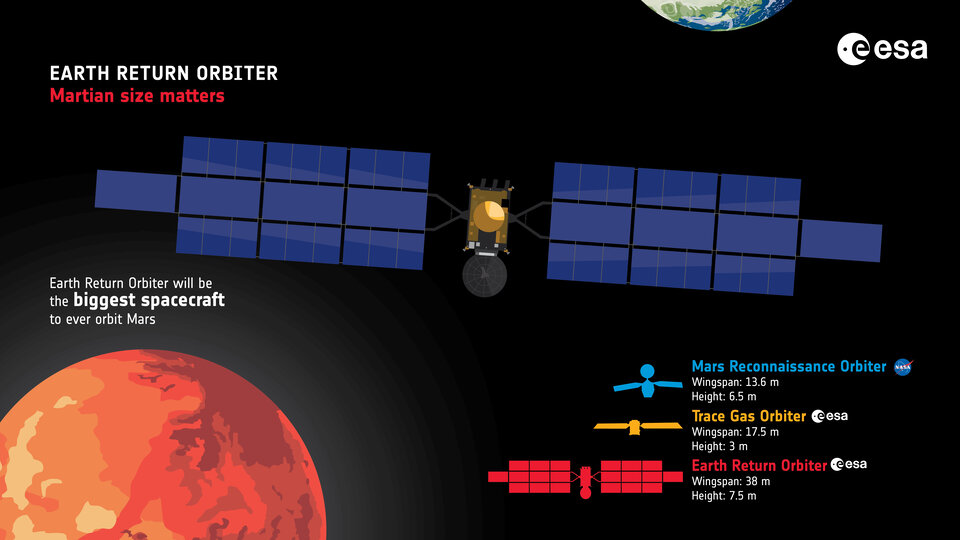
ESA’s Earth Return Orbiter is one of three flight missions making up the Mars Sample Return campaign to bring martian rock, soil and atmospheric samples back to Earth.
In addition to the rendezvous and return mission, ERO would provide critical Mars-Earth communications coverage for the NASA’s Perseverance rover and the Sample Retrieval Lander to deliver the martian samples.
Just as the Apollo Moon samples have powered research for decades, the scientific community would have pristine samples from Mars to study for years to come.
ERO’s round-trip to the Red Planet, as well as its rendezvous with an object launched from the martian surface, paves the way for crewed missions to Mars.
Mission overview at a glance
The ERO mission comprises several mission phases with many technical firsts and in synch with the other elements of the Mars Sample Return campaign.
1. The European spacecraft flies to Mars using the most powerful electric propulsion so far for an interplanetary mission.
2. The Earth Return Orbiter captures a basketball-sized capsule launched from the surface of Mars and filled with a set of samples previously collected by Perseverance.
3. European teams orchestrate the catch in Mars orbit from 50 million km away with the help of ESA and NASA navigation teams.
4. The capsule is safely sealed into NASA’s Earth Entry System to ensure that the precious samples reach Earth’s surface intact for maximum scientific return .
5. Three years after reaching Mars, ERO spends two years to change its orbit and make its way back to Earth.
6. Three days away from Earth, ERO releases the reentry system and places it on a precision trajectory for landing on a predetermined location in our planet.
7. ERO performs a series of maneouvres to enter orbit around the Sun, never to return to Earth.
8. The martian samples are transported to a specialised curation facility, where they are analysed by top scientists and laboratories from around the world.

5 things you need to know
- First round-trip mission to another planet. It would take ERO about two years to reach operational orbit around Mars, one year to do its Mars mission and another two years to leave Mars and return to Earth.
- First spacecraft to capture a man-made object launched from another planet. ERO would demonstrate the first in-orbit rendezvous at Mars.
- Biggest spacecraft to ever orbit Mars. The seven-ton, seven-metre tall spacecraft, is equipped with 144 m² of solar arrays with a span of nearly 40 metres – the largest ever built for interplanetary flight.
- Powerful, hybrid propulsion. The electric propulsion system would be the most powerful ever flown for an interplanetary mission. While ERO would use chemical propulsion to enter Mars orbit, it would rely on solar electric propulsion for the cruise to and from Mars, and for placing itself on an operational orbit.
- R adiation monitor. ERO would measure the total radiation dose received throughout the entire flight. Results would help monitor the health of the spacecraft and provide important information on how to protect human explorers in future trips to Mars.
Quick facts
- Main job: Find and capture a sample capsule in Mars orbit and return it to Earth
- Launch date: No earlier than 2027
- Launch vehicle: Ariane 64
- Launch site: Kourou, French Guiana
- Arrival to Mars: 2029
- Arrival to Mars operational orbit: 2030, 325 km above Mars surface

- Wingspan: 38 m
- Height: 7.5 m
- Solar arrays: 144m²
- Mass: 7 tonnes
- Propulsion System: Hybrid – electric and chemical propulsion
Written by Nadjejda
- Return ticket to Mars
Discussion: one comment
I never really appreciated the enormous size of the MSR Earth Return Orbiter until a direct comparison with the ExoMars Trace Gas Orbiter was illustrated in that infographic… and I thought TGO had quite the width, haha!
Leave a Reply Cancel reply
Your email address will not be published. All fields are mandatory.
Save my name, email, and website in this browser for the next time I comment.

Suggested Searches
- Climate Change
- Expedition 64
- Mars perseverance
- SpaceX Crew-2
- International Space Station
- View All Topics A-Z
Humans in Space
Earth & climate, the solar system, the universe, aeronautics, learning resources, news & events.

NASA’s Commercial Partners Deliver Cargo, Crew for Station Science

Hi-C Rocket Experiment Achieves Never-Before-Seen Look at Solar Flares

NASA Is Helping Protect Tigers, Jaguars, and Elephants. Here’s How.
- Search All NASA Missions
- A to Z List of Missions
- Upcoming Launches and Landings
- Spaceships and Rockets
- Communicating with Missions
- James Webb Space Telescope
- Hubble Space Telescope
- Why Go to Space
- Astronauts Home
- Commercial Space
- Destinations
- Living in Space
- Explore Earth Science
- Earth, Our Planet
- Earth Science in Action
- Earth Multimedia
- Earth Science Researchers
- Pluto & Dwarf Planets
- Asteroids, Comets & Meteors
- The Kuiper Belt
- The Oort Cloud
- Skywatching
- The Search for Life in the Universe
- Black Holes
- The Big Bang
- Dark Energy & Dark Matter
- Earth Science
- Planetary Science
- Astrophysics & Space Science
- The Sun & Heliophysics
- Biological & Physical Sciences
- Lunar Science
- Citizen Science
- Astromaterials
- Aeronautics Research
- Human Space Travel Research
- Science in the Air
- NASA Aircraft
- Flight Innovation
- Supersonic Flight
- Air Traffic Solutions
- Green Aviation Tech
- Drones & You
- Technology Transfer & Spinoffs
- Space Travel Technology
- Technology Living in Space
- Manufacturing and Materials
- Science Instruments
- For Kids and Students
- For Educators
- For Colleges and Universities
- For Professionals
- Science for Everyone
- Requests for Exhibits, Artifacts, or Speakers
- STEM Engagement at NASA
- NASA's Impacts
- Centers and Facilities
- Directorates
- Organizations
- People of NASA
- Internships
- Our History
- Doing Business with NASA
- Get Involved
- Aeronáutica
- Ciencias Terrestres
- Sistema Solar
- All NASA News
- Video Series on NASA+
- Newsletters
- Social Media
- Media Resources
- Upcoming Launches & Landings
- Virtual Events
- Sounds and Ringtones
- Interactives
- STEM Multimedia

Hubble Hunts Visible Light Sources of X-Rays

NASA Selects Students for Europa Clipper Intern Program

NASA Mission Strengthens 40-Year Friendship

NASA Selects Commercial Service Studies to Enable Mars Robotic Science

Two Small NASA Satellites Will Measure Soil Moisture, Volcanic Gases

NASA-Led Study Provides New Global Accounting of Earth’s Rivers

Orbits and Kepler’s Laws

X-ray Satellite XMM-Newton Sees ‘Space Clover’ in a New Light

NASA/JAXA’s XRISM Mission Captures Unmatched Data With Just 36 Pixels

Researchers Develop ‘Founding Document’ on Synthetic Cell Development

ARMD Solicitations

NASA Uses Small Engine to Enhance Sustainable Jet Research

NASA Photographer Honored for Thrilling Inverted In-Flight Image

Big Science Drives Wallops’ Upgrades for NASA Suborbital Missions

Tech Today: Stay Safe with Battery Testing for Space

NASA Grant Brings Students at Underserved Institutions to the Stars

Washington State High Schooler Wins 2024 NASA Student Art Contest

Asian-American and Native Hawaiian Pacific Islander Heritage Month

Diez maneras en que los estudiantes pueden prepararse para ser astronautas

Astronauta de la NASA Marcos Berríos

Resultados científicos revolucionarios en la estación espacial de 2023
6 technologies nasa is advancing to send humans to mars.

1. Powerful propulsion systems to get us there (and home!) quicker
2. inflatable heat shield to land astronauts on other planets, 3. high-tech martian spacesuits, 4. martian home and lab on wheels, 5. uninterrupted power, 6. laser communications to send more information home.
Mars is an obvious source of inspiration for science fiction stories. It is familiar and well-studied, yet different and far enough away to compel otherworldly adventures. NASA has its sights on the Red Planet for many of the same reasons. Robots, including the Perseverance rover launching soon to Mars, teach us about what it’s like on the surface. That intel helps inform future human missions to the Red Planet. We’ll also need to outfit spacecraft and astronauts with technologies to get them there, explore the surface, and safely return them home. The roundtrip mission, including time in transit – from and back to Earth – and on the Martian surface, will take about two years. Technology development has already begun to enable a crewed Mars mission as early as the 2030s. Many of the capabilities will be demonstrated at the Moon first, during the Artemis missions, while other systems are more uniquely suited for deeper space. Here are six technologies NASA is working on to make Mars science fiction a reality.
Astronauts bound for Mars will travel about 140 million miles into deep space. Advancements in propulsion capabilities are the key to reaching our destination as quickly and safely as possible.
It is too soon to say which propulsion system will take astronauts to Mars, but we know it needs to be nuclear-enabled to reduce travel time. NASA is advancing multiple options, including nuclear electric and nuclear thermal propulsion . Both use nuclear fission but are very different from each other. A nuclear electric rocket is more efficient, but it doesn’t generate a lot of thrust. Nuclear thermal propulsion, on the other hand, provides much more “oomph.”
Whichever system is selected, the fundamentals of nuclear propulsion will reduce the crew’s time away from Earth. The agency and its partners are developing, testing, and maturing critical components of various propulsion technologies to reduce the risk of the first human mission to Mars.
The largest rover we’ve landed on Mars is about the size of a car, and sending humans to Mars will require a much bigger spacecraft. New technologies will allow heavier spacecraft to enter the Martian atmosphere, approach the surface , and land close to where astronauts want to explore.
NASA is working on an inflatable heat shield that allows the large surface area to take up less space in a rocket than a rigid one. The technology could land spacecraft on any planet with an atmosphere. It would expand and inflate before it enters the Martian atmosphere to land cargo and astronauts safely.
The technology isn’t ready for the Red Planet just yet. An upcoming flight test of a 6-meter diameter (about 20-feet) prototype will demonstrate how the aeroshell performs as it enters Earth’s atmosphere. The test will prove it can survive the intense heat during entry at Mars.
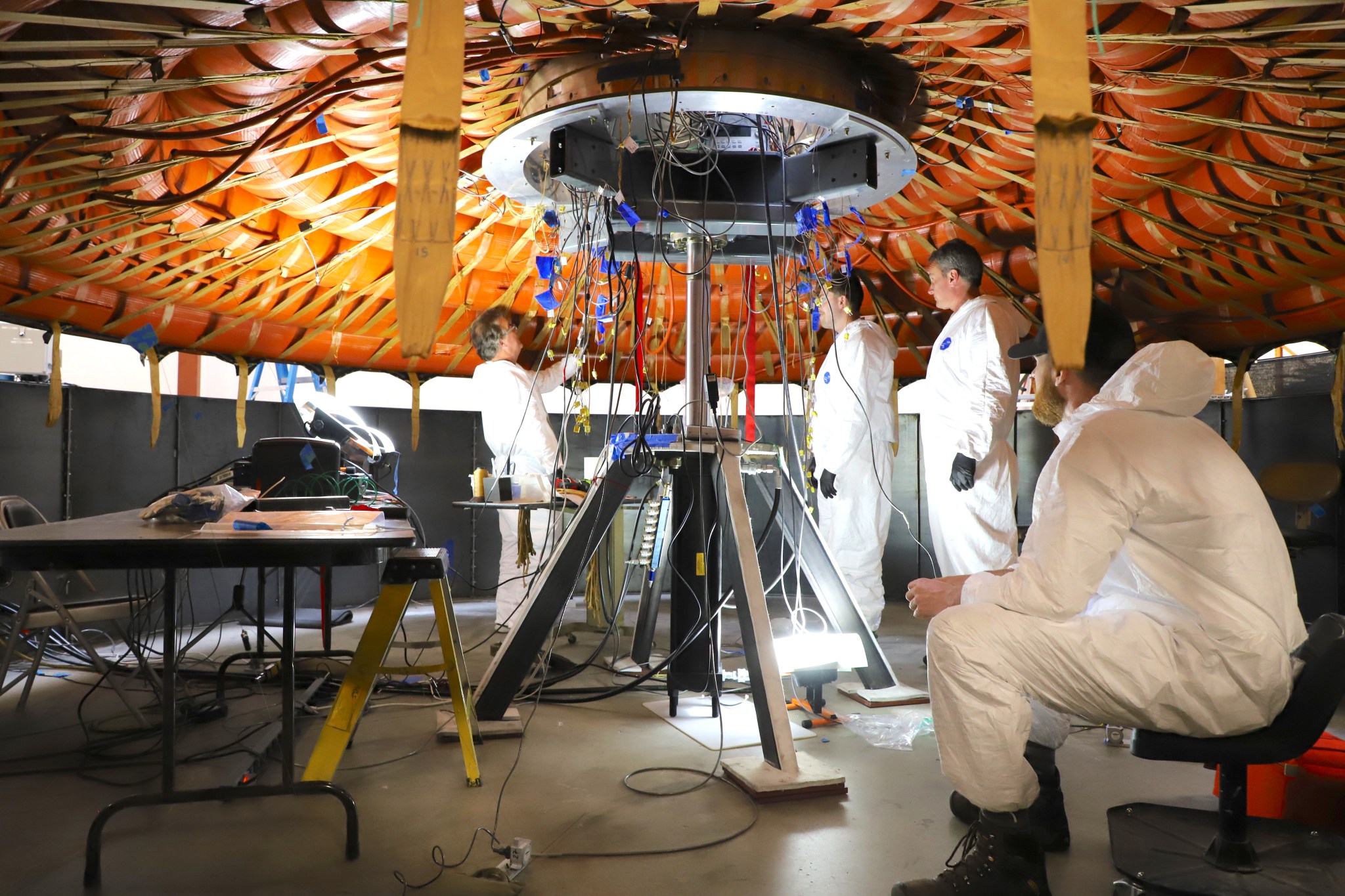
Spacesuits are essentially custom spacecraft for astronauts. NASA’s latest spacesuit is so high-tech, its modular design is engineered to be evolved for use anywhere in space.
The first woman and the next man on the Moon will wear NASA’s next-generation spacesuits called the exploration extravehicular mobility unit or xEMU. The spacesuits prioritize crew safety while also allowing Artemis Generation moonwalkers to make more natural, Earth-like movements and accomplish tasks that weren’t possible during the Apollo missions.
Future upgrades to address the differences on Mars may include technology for life support functionality in the carbon dioxide-rich atmosphere and modified outer garments to keep astronauts warm during the Martian winter and prevent overheating in the summer season.
To reduce the number of items needed to land on the surface, NASA will combine the first Martian home and vehicle into a single rover complete with breathable air.
NASA has conducted extensive rover testing on Earth to inform development of a pressurized mobile home on the Moon. Artemis astronauts who live and work in the future pressurized Moon rover will be able to offer feedback to help refine the rover capabilities for astronauts on Mars. NASA’s robotic rovers will help with the Martian design, too – everything from the best wheels for Mars to how a larger vehicle will navigate the tough terrain.
Much like an RV, the pressurized rover will have everything inside that astronauts need to live and work for weeks. They can drive in comfortable clothing, tens of miles from the spacecraft that will launch them back to space for the return trip to Earth. When they encounter interesting locations, astronauts can put on their high-tech spacesuits to exit the rover and collect samples and conduct science experiments.
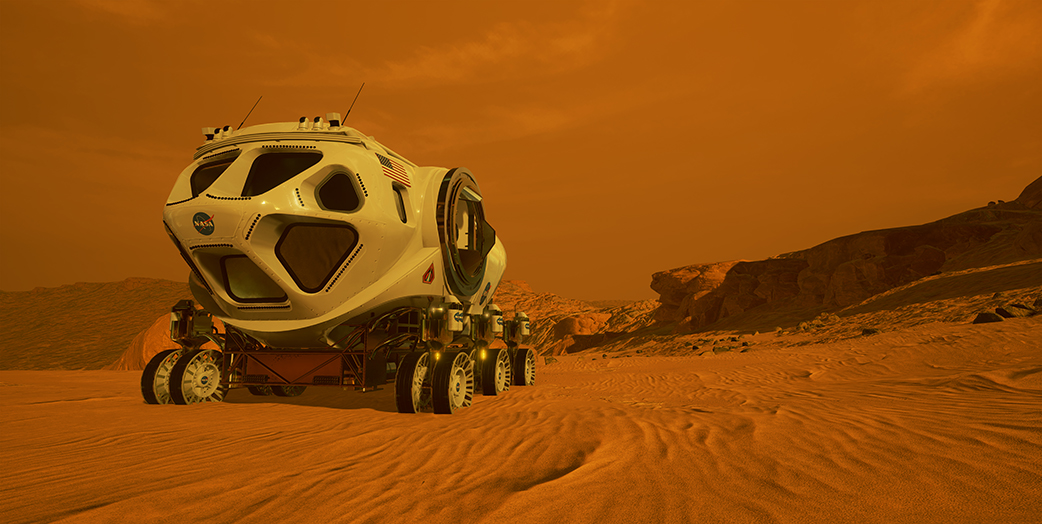
Like we use electricity to charge our devices on Earth, astronauts will need a reliable power supply to explore Mars. The system will need to be lightweight and capable of running regardless of its location or the weather on the Red Planet.
Mars has a day and night cycle like Earth and periodic dust storms that can last for months, making nuclear fission power a more reliable option than solar power. NASA already tested the technology on Earth and demonstrated it is safe, efficient, and plentiful enough to enable long-duration surface missions. NASA plans to demonstrate and use the fission power system on the Moon first, then Mars.
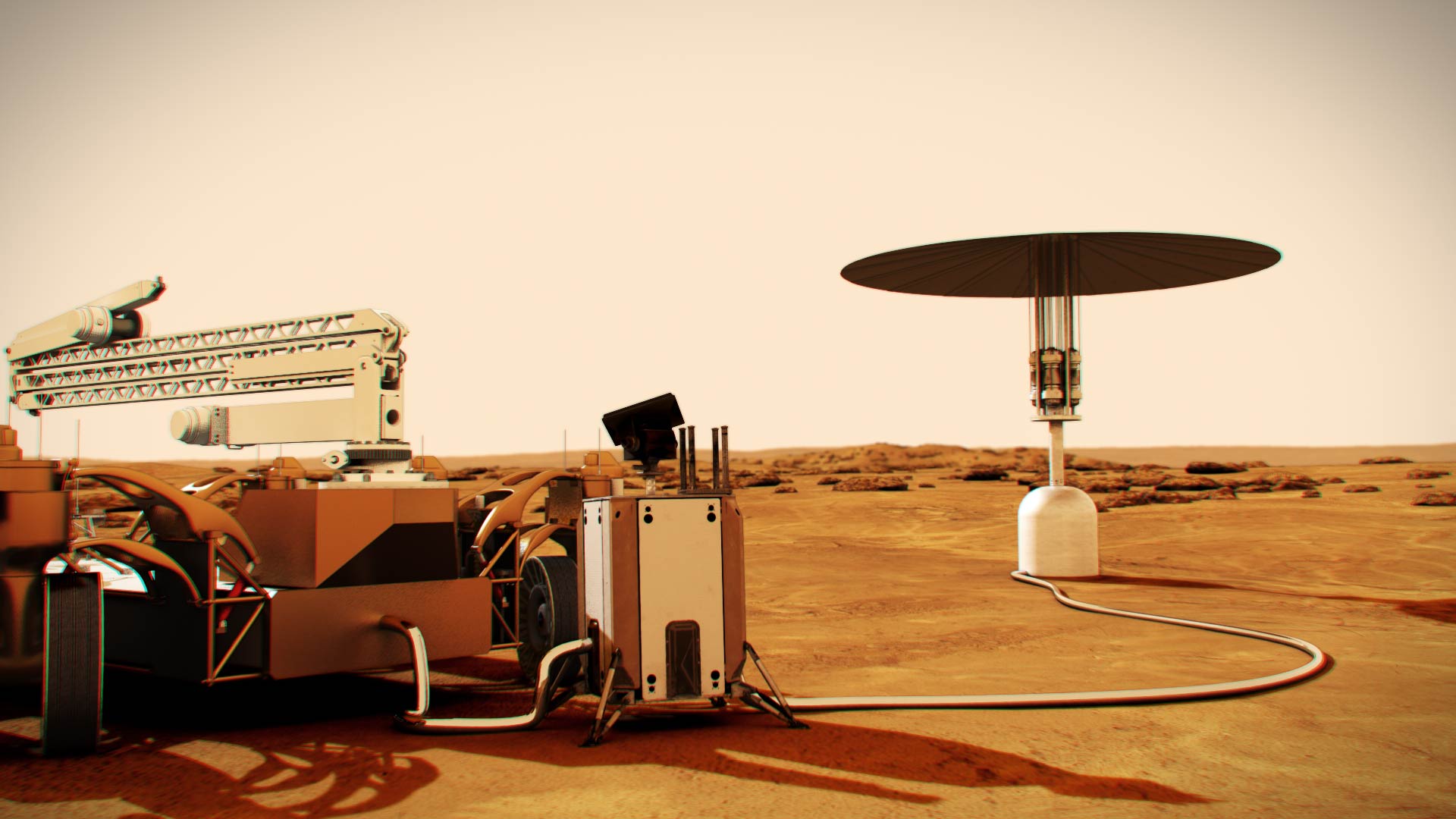
Human missions to Mars may use lasers to stay in touch with Earth. A laser communications system at Mars could send large amounts of real-time information and data, including high-definition images and video feeds.
Sending a map of Mars to Earth might take nine years with current radio systems, but as little as nine weeks with laser communications . The technology would also allow us to communicate with astronauts, to see and hear more of their adventures on the Red Planet. NASA proved laser communications is possible with a demonstration from the Moon in 2013. The agency’s next demo will work through different operational scenarios, perfect the pointing system, and address technology challenges from low-Earth orbit – things like clouds and other communications disruptions. NASA is building small systems to test for human spaceflight, including on the International Space Station and the first crewed Artemis mission. Another laser communications payload will venture to deep space to help inform what it takes to use the same technology millions and millions of miles away from Earth.
To learn more about NASA’s Moon to Mars exploration approach, visit:
https://www.nasa.gov/topics/moon-to-mars
- Election 2024
- Entertainment
- Newsletters
- Photography
- Personal Finance
- AP Investigations
- AP Buyline Personal Finance
- AP Buyline Shopping
- Press Releases
- Israel-Hamas War
- Russia-Ukraine War
- Global elections
- Asia Pacific
- Latin America
- Middle East
- Election Results
- Delegate Tracker
- AP & Elections
- Auto Racing
- 2024 Paris Olympic Games
- Movie reviews
- Book reviews
- Personal finance
- Financial Markets
- Business Highlights
- Financial wellness
- Artificial Intelligence
- Social Media
China sends a probe to get samples from the less-explored far side of the moon
In this photo provided by China’s Xinhua News Agency, a Long March-5 rocket, carrying the Chang’e-6 spacecraft, blasts off from its launchpad at the Wenchang Space Launch Site in Wenchang, south China’s Hainan Province, Friday, May 3, 2024. China on Friday launched a lunar probe to land on the far side of the moon and return with samples that could provide insights into differences between the less-explored region and the better-known near side. (Guo Cheng/Xinhua via AP)
FILE - This photo provided on Jan. 12, 2019, by the China National Space Administration via Xinhua News Agency shows the lunar lander of the Chang’e-4 probe in a photo taken by the rover Yutu-2 on Jan. 11. China is preparing to launch a lunar probe Friday, May 3, 2024, that would land on the far side of the moon and return with samples that could provide insights into geological and other differences between the less-explored region and the better-known near side. (China National Space Administration/Xinhua News Agency via AP, File)
- Copy Link copied
TAIPEI, Taiwan (AP) — China on Friday launched a lunar probe to land on the far side of the moon and return with samples that could provide insights into differences between the less-explored region and the better-known near side.
It is the latest advance in China’s increasingly sophisticated space exploration program, which is now competing with the U.S., still the leader in space.
China also has a three-member crew on its own orbiting space station and aims to put astronauts on the moon by 2030. Three Chinese lunar probe missions are planned over the next four years.
Free from exposure to Earth and other interference, the moon’s somewhat mysterious far side is ideal for radio astronomy and other scientific work. Because the far side never faces Earth, a relay satellite is needed to maintain communications.
The rocket carrying the Chang’e-6 lunar probe — named after the Chinese mythical moon goddess — lifted off Friday at 5:27 p.m. as planned from the Wenchang launch center on the island province of Hainan. About 35 minutes later it separated entirely from the massive Long March-5 rocket — China’s largest — that had slung it into space, as technicians monitoring the launch from ground control smiled and applauded.
Shortly afterward, launch mission commander Zhang Zuosheng took to a podium at the front of the room and said the launch had gone off exactly as planned and the spacecraft was on its set trajectory. “I declare this launch mission a complete success,” Zhang said to further applause.
The Philippine Space Agency issued a statement saying expected debris from the rocket launch was “projected to have fallen within the identified drop zones.”
China in 2021 was forced to defend its handling of a rocket booster that burned up over the Indian Ocean after the administrator of the American space agency and others accused Beijing of acting recklessly by allowing its rocket to fall to Earth seemingly uncontrolled after the mission.
Huge numbers of people crowded Hainan’s beaches to view the launch, which comes in the middle of China’s five-day May Day holiday. As with previous recent launches, the event was televised live by state broadcaster CCTV.
After orbiting the moon to reduce speed, the lander will separate from the spacecraft and within 48 hours of setting down it will begin drilling into the lunar surface and scooping up samples with its robotic arm. With the samples sealed in a container, it will then reconnect with the returner for the trip back to Earth. The entire mission is set to last 53 days.
China in 2020 returned samples from the moon’s near side, the first time anyone had done so since the former Soviet Union in 1976. Analysis of the samples found they contained water in tiny beads embedded in lunar dirt.
Also in the past week, three Chinese astronauts returned home from a six-month mission on the country’s orbiting space station after the arrival of its replacement crew.
China built its own space station after being excluded from the International Space Station, largely because of U.S. concerns over the Chinese military’s total control of the space program amid a sharpening competition in technology between the two geopolitical rivals. U.S. law bars almost all cooperation between the U.S. and Chinese space programs without explicit congressional approval.
Faced with such limitations, China has expanded cooperation with other countries and agencies. The latest mission carries scientific instruments from France, Italy and the European Space Agency in cooperation with Sweden. A small Pakistani satellite is also on board.
China’s ambitious space program aims to put astronauts on the moon by 2030 , as well as bring back samples from Mars around the same year and launch three lunar probe missions over the next four years. The next is schedule for 2027.
Longer-term plans call for a permanent crewed base on the lunar surface, although those appear to remain in the conceptual phase.
China conducted its first crewed space mission in 2003, becoming the third country after the former Soviet Union and the U.S. to put a person into space using its own resources.
The three-module Tiangong, much smaller than the ISS, was launched in 2021 and completed 18 months later. It can accommodate up to six astronauts at a time and is mainly dedicated to scientific research. The crew will also install space debris protection equipment, carry out payload experiments, and beam science classes to students on Earth.
China has also said that it eventually plans to offer access to its space station to foreign astronauts and space tourists . With the ISS nearing the end of its useful life, China could eventually be the only country or corporation to maintain a crewed station in orbit.
The U.S. space program is believed to still hold a significant edge over China’s due to its spending, supply chains and capabilities.
The U.S. aims to put astronauts back on the lunar surface by 2026 at the earliest. This time, though, NASA is partnering with private companies such as SpaceX and Blue Origin, which will provide the landers for the astronauts.
They plan to land on the moon’s south pole where permanently shadowed craters are believed to be packed with frozen water.
This story has been corrected to reflect the correct date of next U.S. lunar crewed mission and the last time before 2020 that lunar samples were brought back.
China launches lunar probe, looking to be 1st nation to get samples from far side of moon
China launched an uncrewed lunar probe friday that it hopes makes it the first nation to ever retrieve samples from the far-side of the moon..

China is aiming to become the first nation to ever retrieve samples from the far-side of the moon with an ambitious mission to send a probe to the unexplored region that launched Friday.
The launch of the uncrewed mission is a key part of China's goal of becoming a space power and, ultimately, sending its own astronauts to the lunar surface in the years ahead. The far-side of the moon is shrouded in mystery, and China hopes that by obtaining and returning the samples, the nation will glean key insights into how and why it's so different from the near-side, according to multiple reports.
Friday’s launch also comes amid a multi-nation space race heating up between countries like India , Japan and the U.S. who have their sights set on the moon. Space agencies across the world view the moon as a valuable destination due to the resources it provides to aid further deep space exploration and missions to Mars .
New Webb telescope photos: Horsehead Nebula's iconic 'mane' is seen in stunning detail in new images from NASA
China's Chang’e-6 probe on 53-day mission
The Chang’e-6 lunar probe, named after the Chinese mythical moon goddess, was carried aboard a rocket that lifted off at 5:27 p.m. Friday from the Wenchang launch center on south China’s Hainan island.
The spacecraft carrying the lander separated from China's Long March-5 rocket within about 35 minutes as spectators gathered to watch the historic moment, which was also televised live by state broadcaster CCTV. The country’s National Space Administration said the launch was a success, multiple outlets reported.
The anticipated 53-day mission comes after China became the first country in 2013 to achieve a robotic lunar landing in nearly four decades, and two years after the nation completed its own orbital space station, the Tiangong , in 2022 to rival the International Space Station .
The spacecraft carrying the Chang’e-6 lander is expected to take about five days to reach the moon's far side, which never faces Earth, where it will then orbit for another 20, according to reports. Within 48 hours of touching down, the lander will drill into the surface and scoop up samples with a robotic arm before preparing for a trip back to Earth, the Associated Press reported .
The mission follows another in 2020 when its predecessor, Chang’e-5, gathered nearly four pounds of regolith from the moon’s near side and brought it to Earth. By analyzing the samples, China scientists hope to figure out why the two sides of the moon are so different, Ge Ping, deputy director of the China National Space Administration’s (CNSA) Center of Lunar Exploration and Space Engineering told reporters last week from the launch site, according to CNN .
China’s space program's main aim is to put astronauts on the moon by 2030 – four years after U.S. astronauts are slated to return to the lunar surface in 2026 for the first time since the Apollo era came to an end five decades ago.
Japan lunar lander powers away on moon
China's mission is the latest in a series of lunar missions designed to orbit or land on the moon's surface.
Last year, India landed its first spacecraft, the Chandrayaan-3 , on the moon around the same time Russia’s first lunar mission in decades ended in failure when its Luna 25 probe crashed into the lunar surface.
In January, Japan became the fifth nation to get an uncrewed craft to the lunar surface, joining India, the U.S., Russia/Soviet Union and China. That lander continues to hum away on the surface, far outlasting its odds for survival more than three months since it touched down.
NASA plans future U.S. moon missions through Artemis
For the United States, American astronauts have not set foot on the moon since the last Apollo mission in 1972. NASA's Artemis program hopes to return the nation back to the lunar surface in order to establish a base of operations ahead of crewed trips to Mars.
But Artemis has been mired in delays and controversy as elected officials and other aeronautics experts have expressed concerns about the scope and cost of the ambitious program .
Before any humans can return to the moon, NASA needed to make sure an American probe could make it to the lunar surface to pave the way for their arrival.
Those hopes were initially dashed in January when an uncrewed craft designed by Pittsburgh-based aerospace company Astrobotic encountered a slew of issues . The Peregrine lander never made it to the moon , but a second chance for the U.S. came a month later.
The Odysseus lander designed by Houston-based Intuitive Machines had a sideways landing of its own on Feb. 22, but still made it to the surface and transmitted back data.
NASA, which was the primary customer for the mission, paid a hefty sum to have a payload of scientific instruments included aboard the lander to collect data that will help the agency prepare for future lunar missions.
Within a week of landing near the south pole, Odysseus was on the verge of powering down for good. In its final update on March 23 , Intuitive Machines determined that Odysseus' power was depleted and the craft had "permanently faded after cementing its legacy into history as the first commercial lunar lander to land on the moon."
Eric Lagatta covers breaking and trending news for USA TODAY. Reach him at [email protected]

COMMENTS
Oct 08, 2015. RELEASE 15-206. NASA is leading our nation and the world on a journey to Mars, and Thursday the agency released a detailed outline of that plan in its report, "NASA's Journey to Mars: Pioneering Next Steps in Space Exploration.". "NASA is closer to sending American astronauts to Mars than at any point in our history ...
NASA is reimagining the future of Mars exploration, driving new scientific discoveries, and preparing for humans on Mars. NASA's Mars Exploration Program will focus the next two decades on its science-driven systemic approach on these strategic goals: exploring for potential life, understanding the geology and climate of Mars, and preparation for human exploration.
NASA aims to launch astronauts to Mars by the late 2030s or early 2040s. Making that vision a reality will be challenging. ... the round-trip travel time would still be about 500 days given the ...
Orion is the first spacecraft built for astronauts destined for deep space since the storied Apollo missions of the 1960s and 70s. It is designed to go farther than humans have ever traveled, well beyond the moon, pushing the boundaries of spaceflight to new heights. Orion will open the space between Earth and Mars for exploration by astronauts.
SpaceX's Starship spacecraft and Super Heavy rocket - collectively referred to as Starship - represent a fully reusable transportation system designed to carry both crew and cargo to Earth orbit, the Moon, Mars and beyond. Starship is the world's most powerful launch vehicle ever developed, capable of carrying up to 150 metric tonnes ...
Travel to Mars The minimum distance between the orbits of Mars and Earth from 2014 to 2061, measured in astronomical units. The energy needed for transfer between planetary orbits, or delta-v, is lowest at intervals fixed by the synodic period.For Earth-Mars trips, the period is every 26 months (2 years, 2 months), so missions are typically planned to coincide with one of these launch periods.
April 30, 2021, file image taken by the Mars Perseverance rover. The Mars Ingenuity helicopter, right, flies over the surface of the planet. (NASA/JPL-Caltech/ASU/MSSS via AP, File) AP hide caption
WASHINGTON — If NASA is to land humans on Mars by the 2030s, as President Barack Obama has directed, there's not much time to settle on a plan and develop the technologies required, agency ...
January 14, 2014 / 11:40 AM EST / Space.com. Sending humans to Mars by the 2030s is affordable, a group of experts finds, but some key changes are needed if it is going to happen. A workshop group ...
NASA wants to put people on Mars by the 2030s. Last week, they detailed how that might become a reality. In a report titled " NASA's Journey to Mars: Pioneering Next Steps in Space Exploration ...
It envisions a series of lower cost Mars missions, costing up to $300 million, at every 2-year launch window. The program could begin as soon as 2030, said Eric Ianson, director of NASA's Mars Exploration Program, in a presentation today to the U.S. National Academies of Sciences, Engineering, and Medicine.
The agency is finding it quite challenging to make their Mars vision a reality in the next 16 years. Astronauts may orbit Mars by 2033, but setting foot on the Red Planet by the end of next decade ...
The Earth Return Orbiter (ERO) is a mission of firsts. The European orbiter would be: The first interplanetary spacecraft to make a full round-trip from Earth to Mars. The first spacecraft to rendezvous and capture an object in orbit around another planet. The biggest spacecraft to orbit the Red Planet. Earth Return Orbiter infographic.
published 14 January 2014. A mission to Mars could take a toll on astronauts' bodies, including their eyes.(Image credit: ESA) Sending humans to Mars by the 2030s is affordable, a group of experts ...
For example, Mars One, a privately funded project that aims to establish a human presence on Mars, said a one-way trip to the red planet "is currently the only way we can get people on Mars within ...
Before making the three-year round-trip to Mars, ... according to NASA's timeline of the journey to Mars. Sometime between 2018 and 2030, NASA plans to send crewed missions on spacewalks in the ...
NASA's Chief Administrator Steve Jurczyk believes the agency could be ready to send humans to Mars by the late 2030s. To make that a reality, researchers nee...
That's where we come in. Backed by research from NASA and MIT, Mars 2030 is an engaging, scientifically accurate recreation of the Red Planet. It gives users the opportunity to familiarize themselves with an unfamiliar world and utilize the technology at hand to make their trip to Mars a reality.
Quick facts. Main job: Find and capture a sample capsule in Mars orbit and return it to Earth. Launch date: No earlier than 2027. Launch vehicle: Ariane 64. Launch site: Kourou, French Guiana. Arrival to Mars: 2029. Arrival to Mars operational orbit: 2030, 325 km above Mars surface. Entry capsule towards Earth.
NASA is advancing many technologies to send astronauts to Mars as early as the 2030s. Here are six things we are working on right now to make future human missions to the Red Planet possible. Credits: NASA. 1. Powerful propulsion systems to get us there (and home!) quicker.
I/O psychology goes to Mars. Research by industrial-organizational psychologists is guiding efforts to promote team cohesion among astronauts during the longest-ever manned space voyage: NASA's planned 2030 trip to Mars. By Amy Novotney. March 2013, Vol 44, No. 3. Print version: page 38. 6 min read.
China also has a three-member crew on its own orbiting space station and aims to put astronauts on the moon by 2030. Three Chinese lunar probe missions are planned over the next four years. Free from exposure to Earth and other interference, the moon's somewhat mysterious far side is ideal for radio astronomy and other scientific work.
China's space program's main aim is to put astronauts on the moon by 2030 - four years after U.S. astronauts are slated to return to the lunar surface in 2026 for the first time since the ...